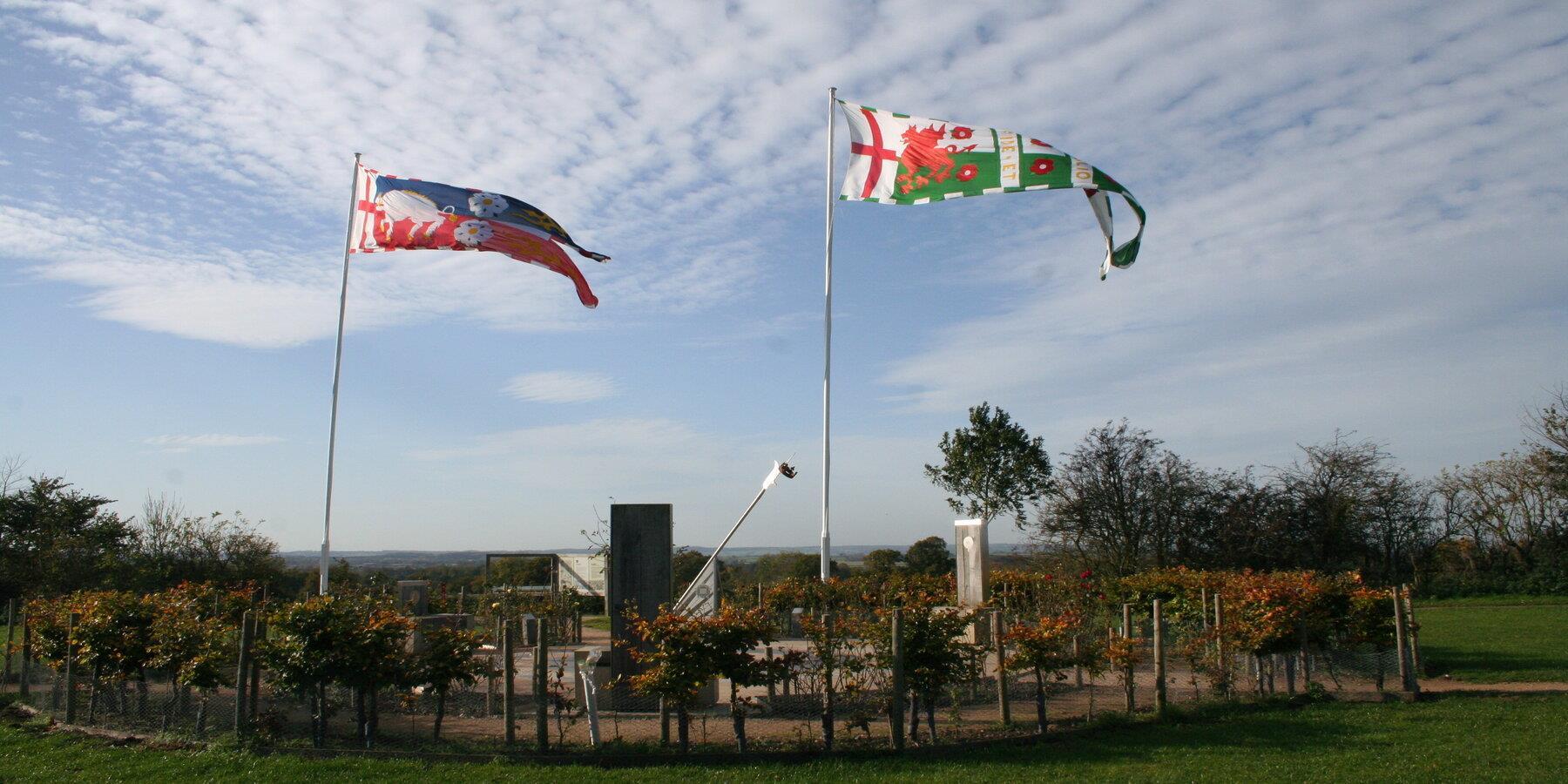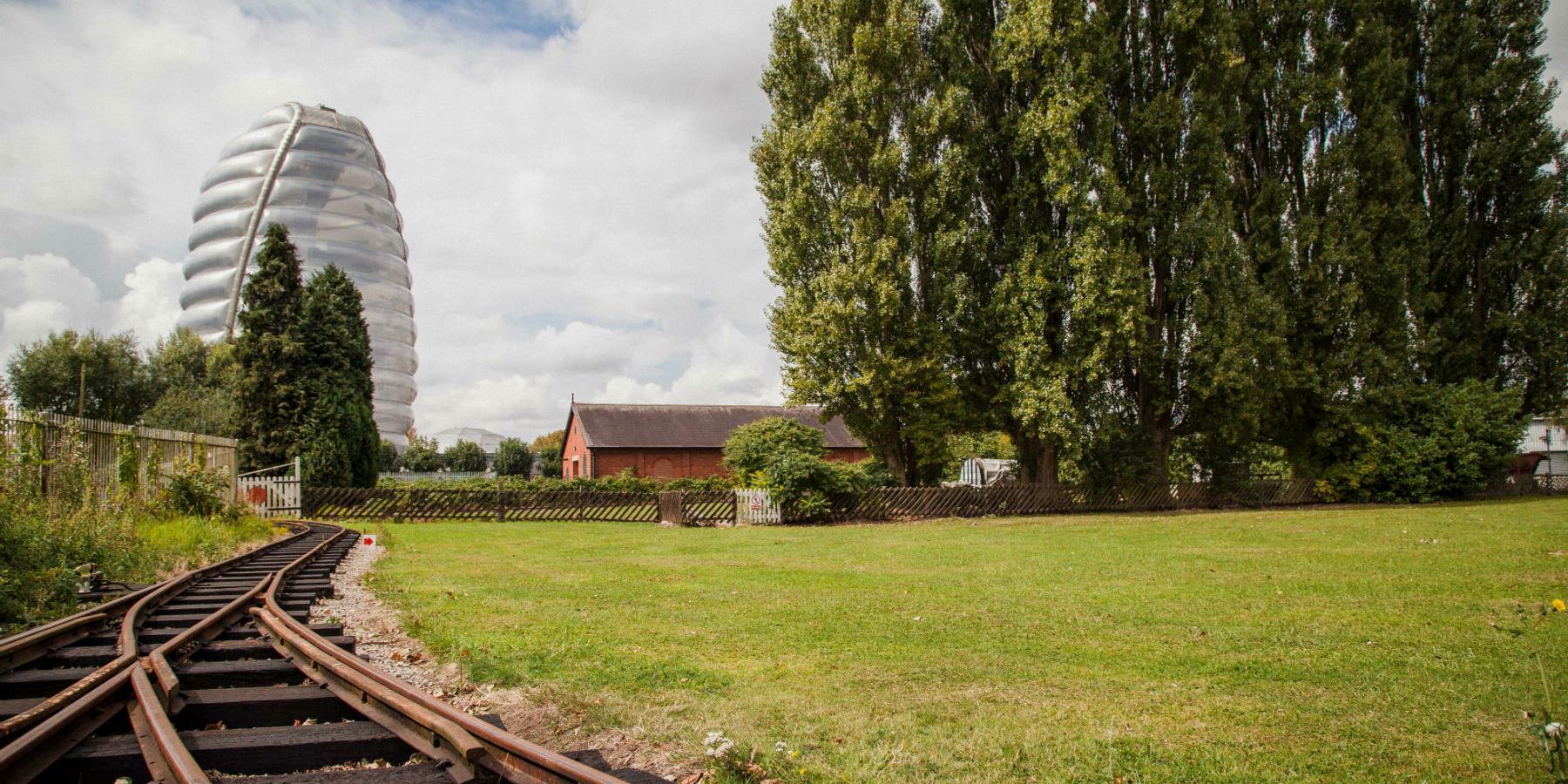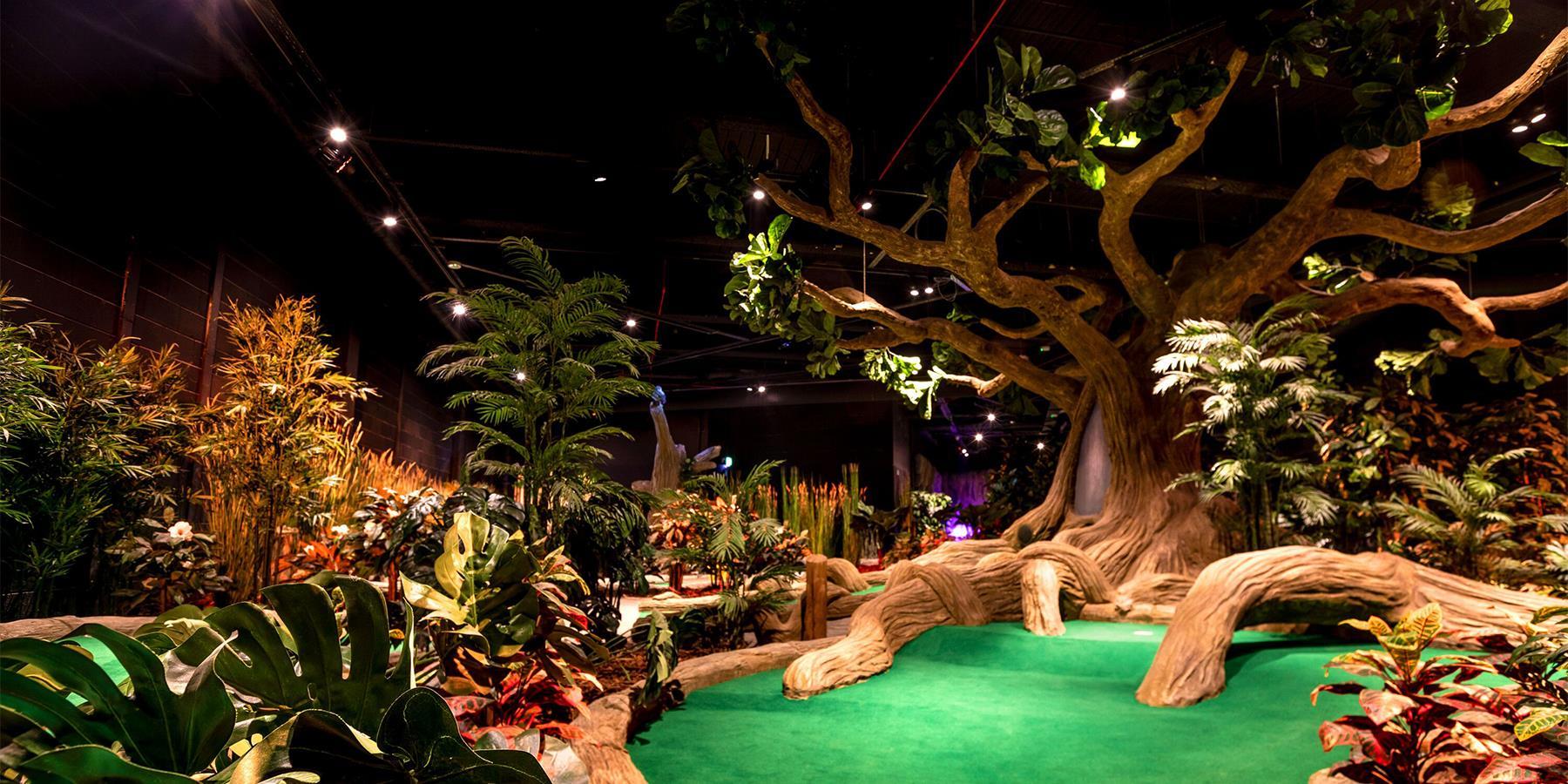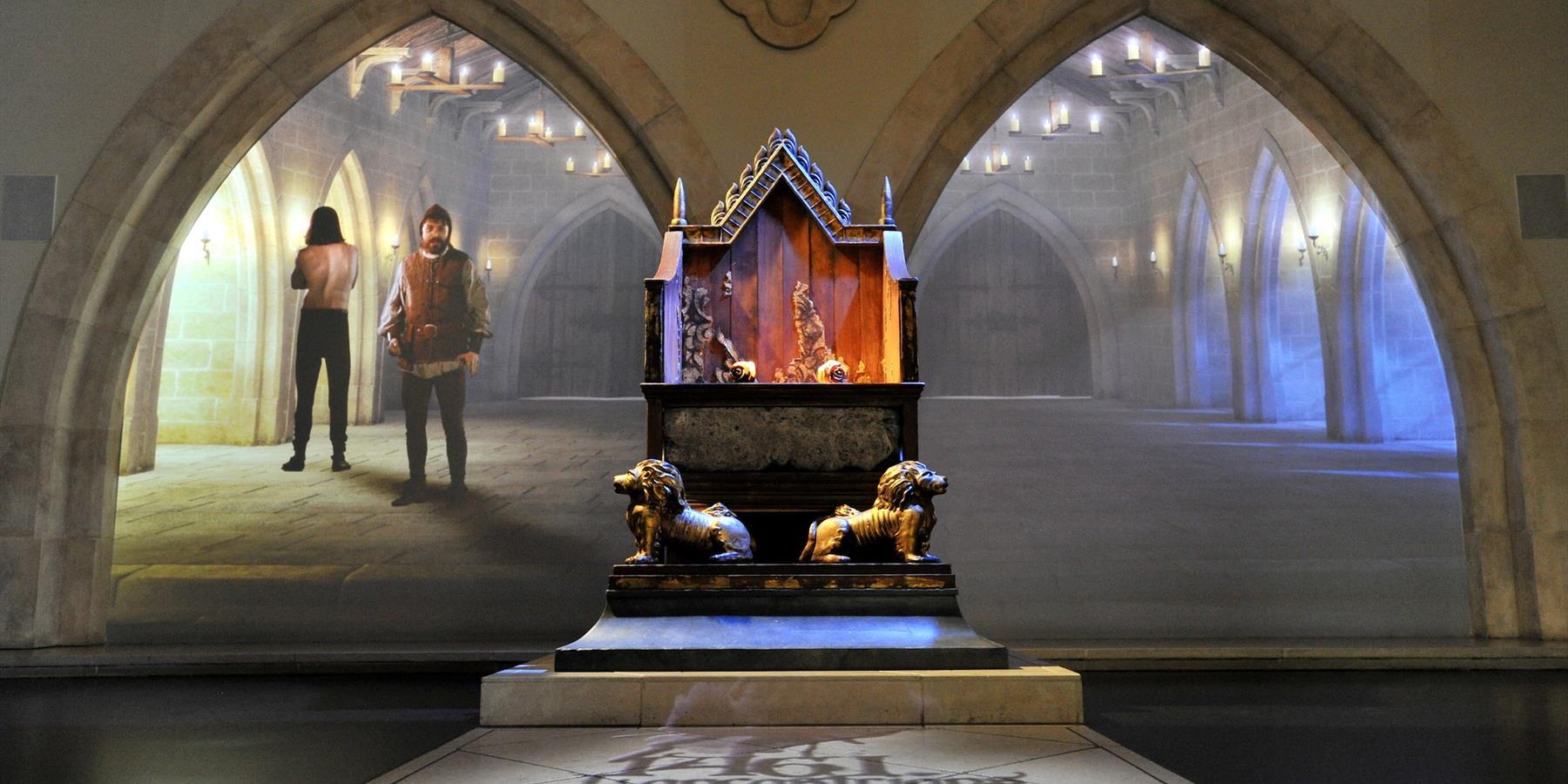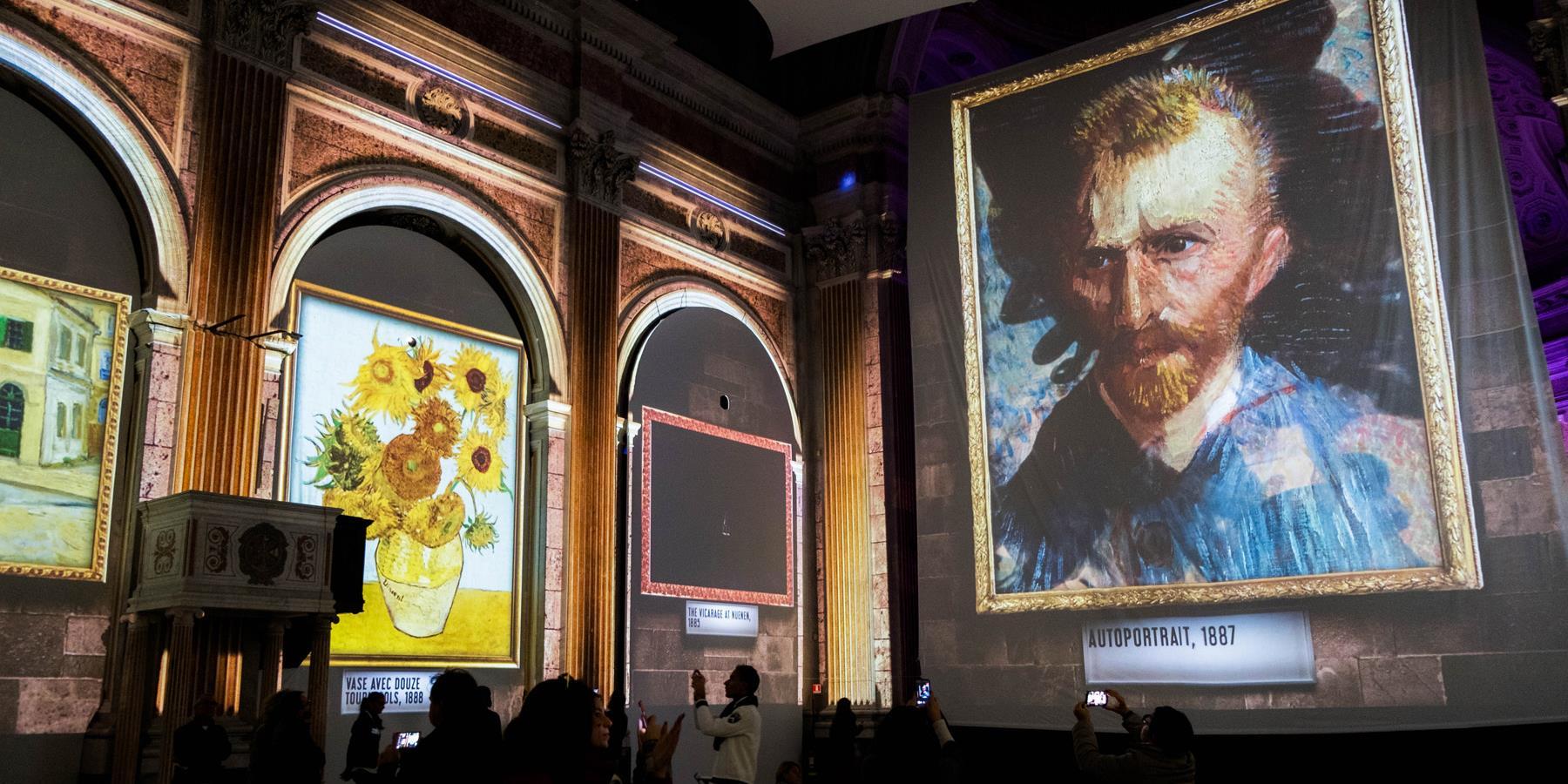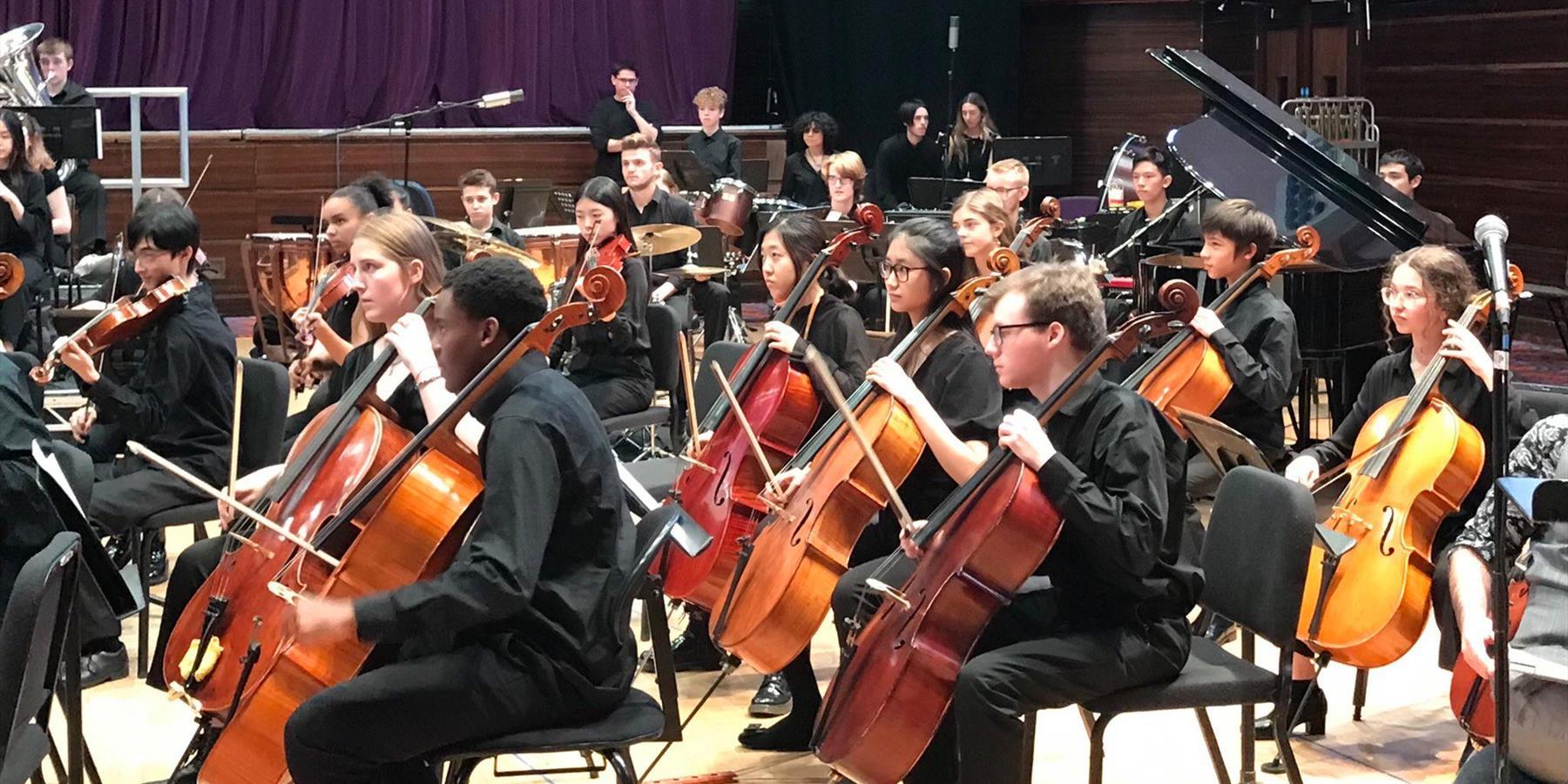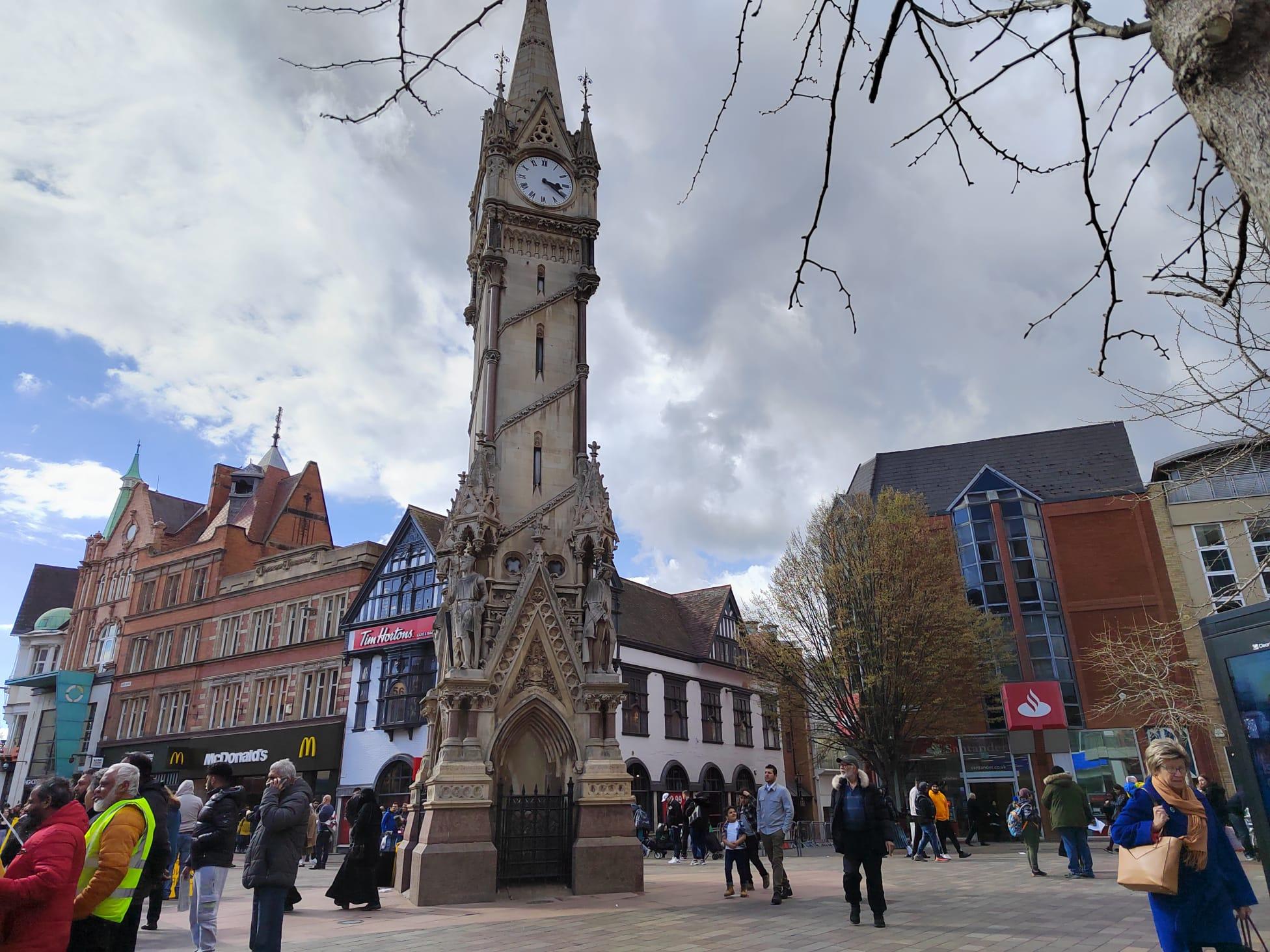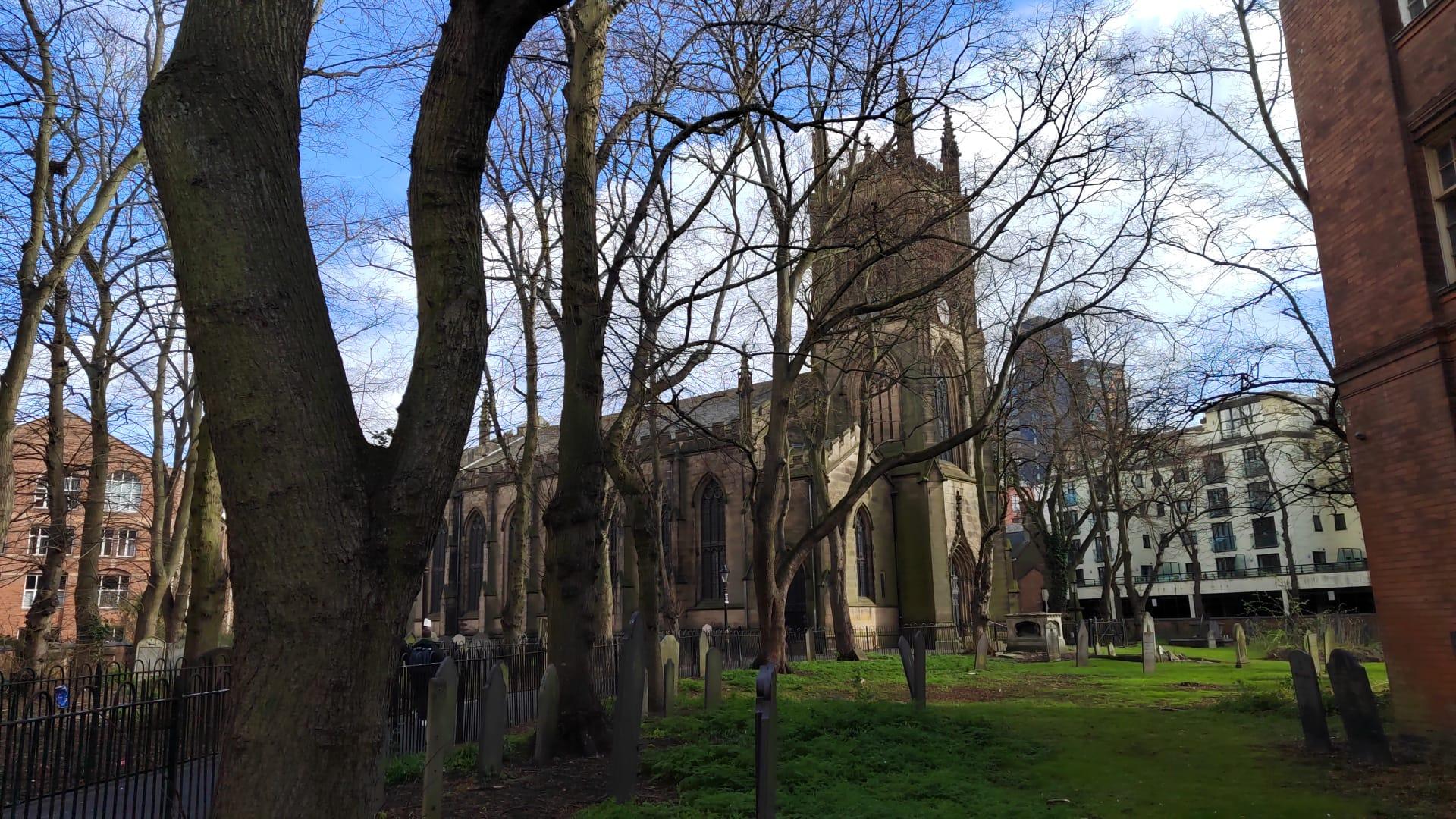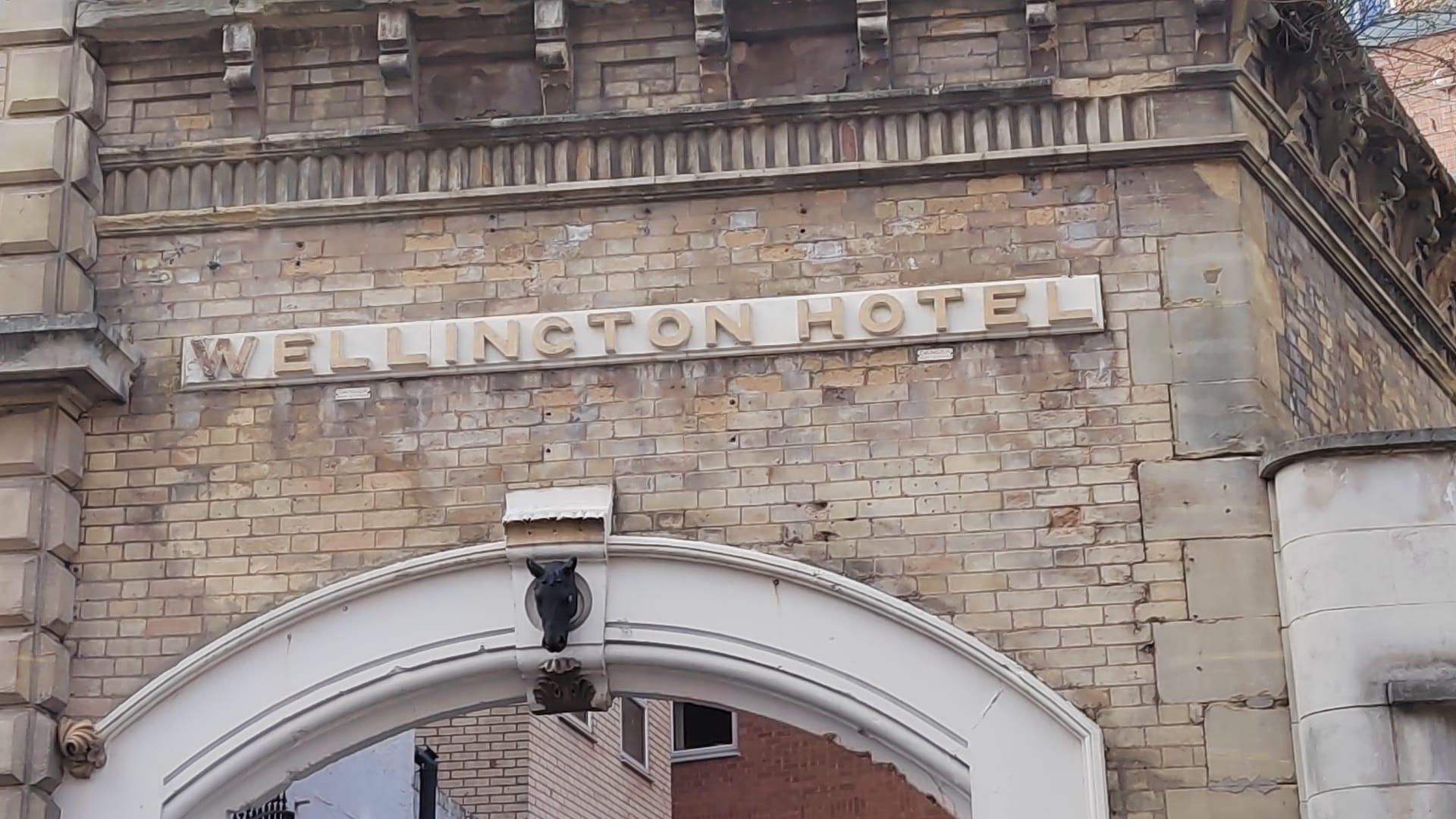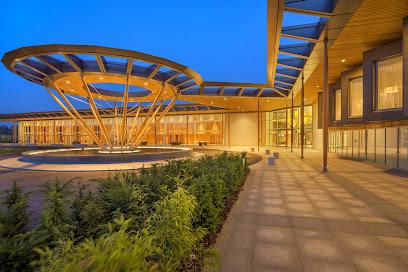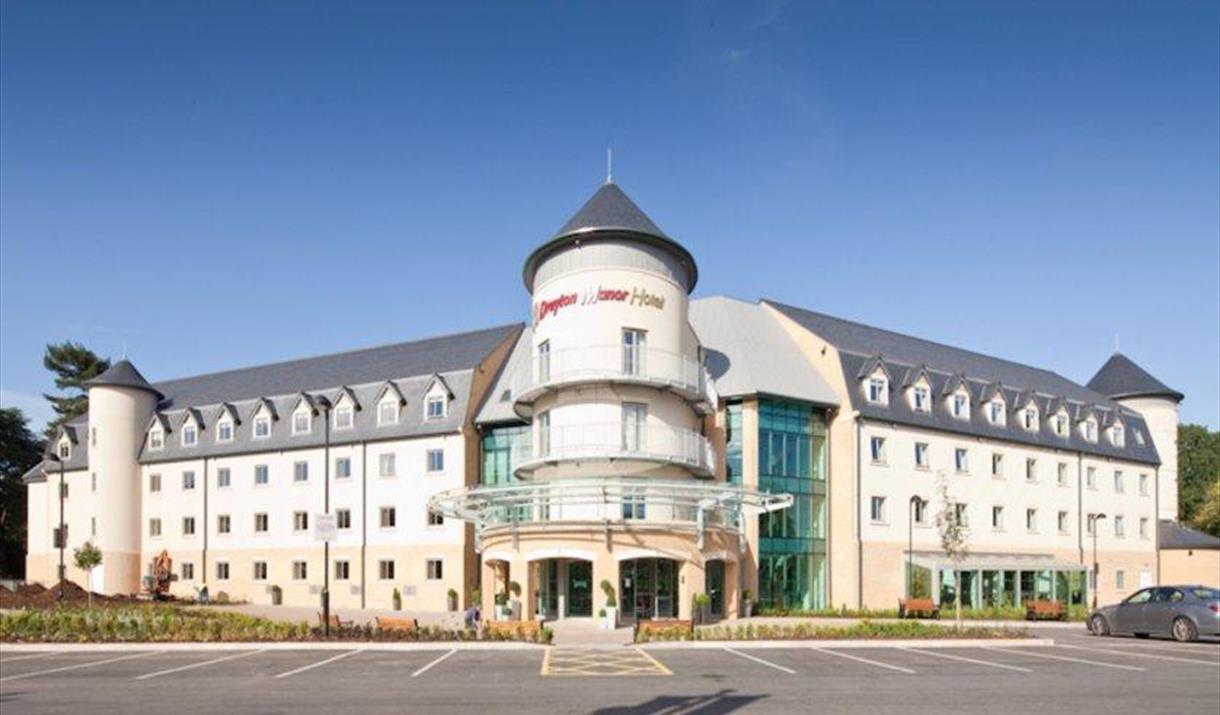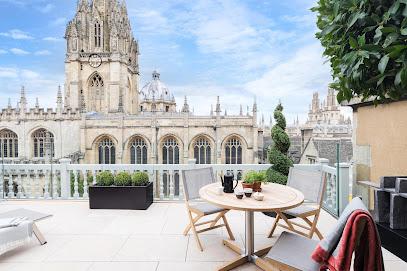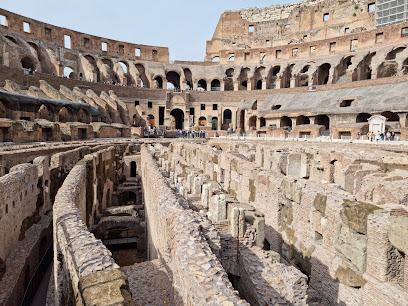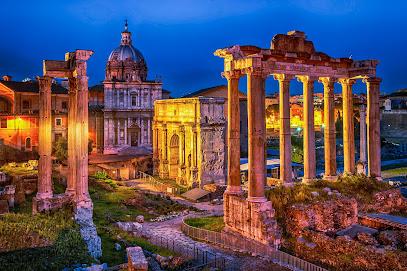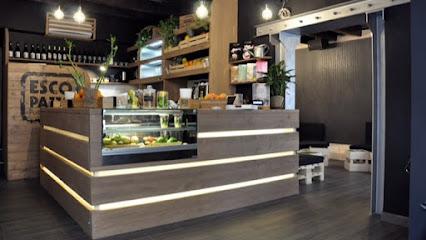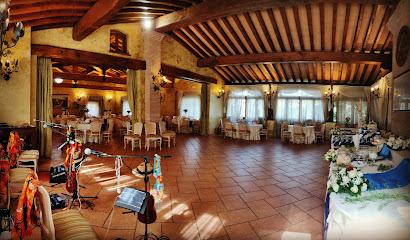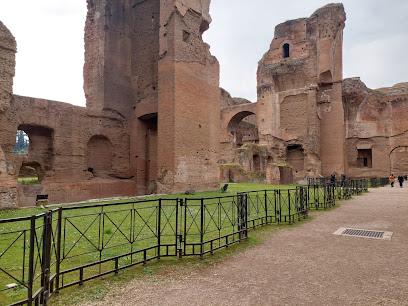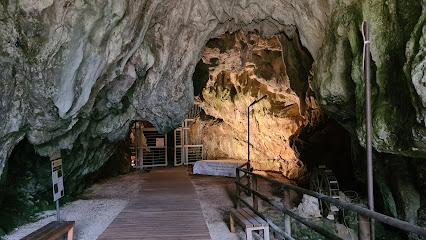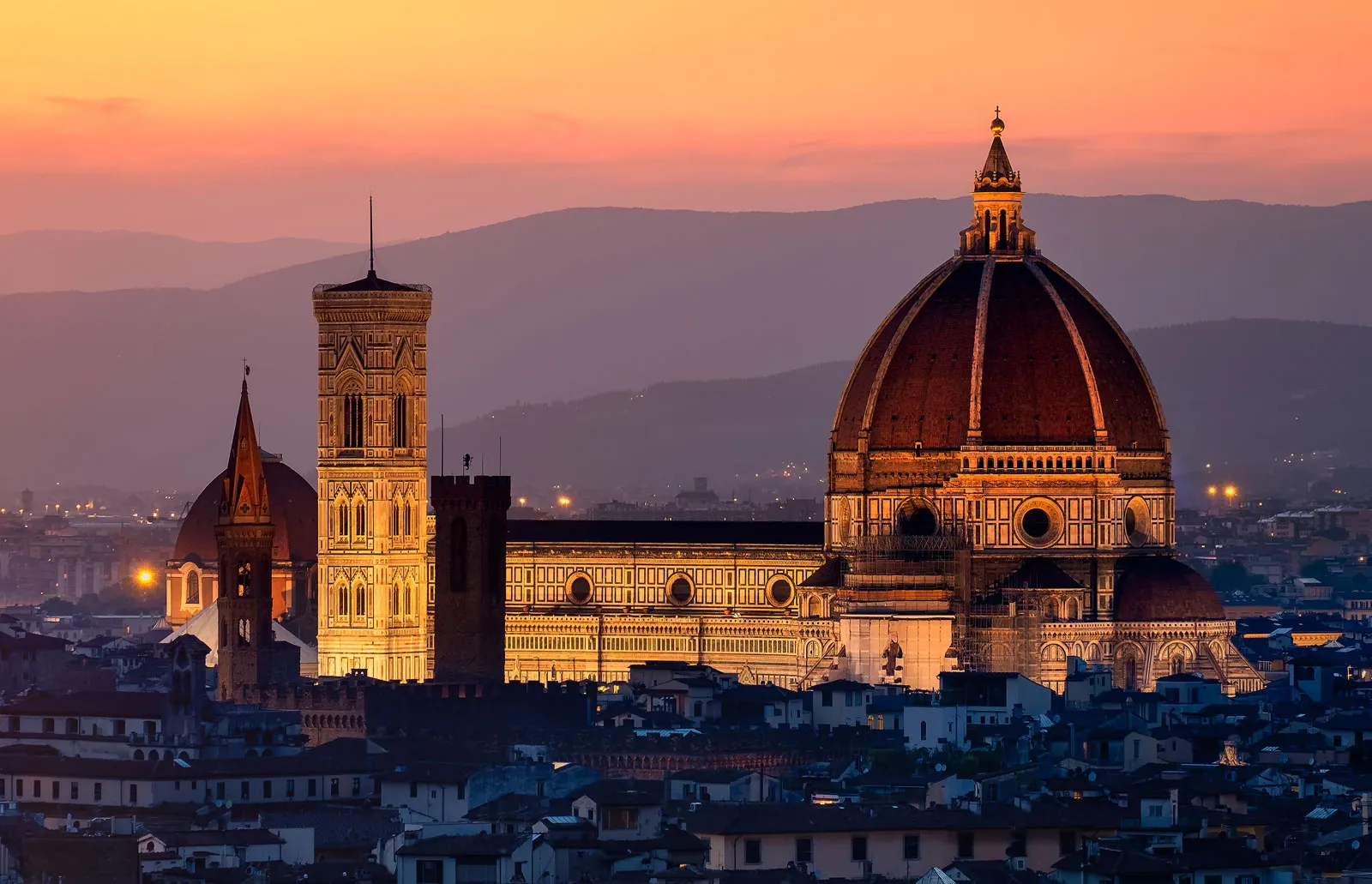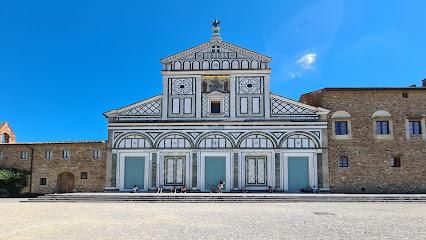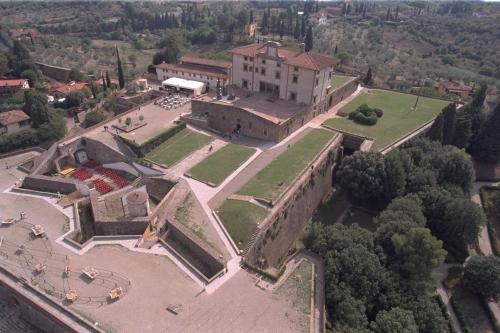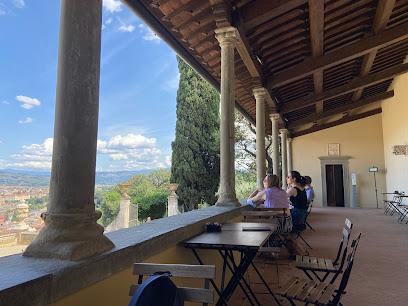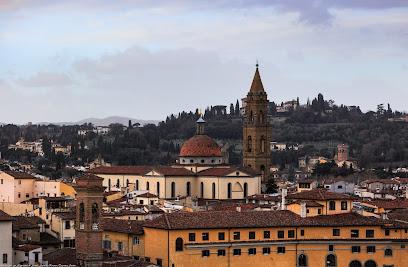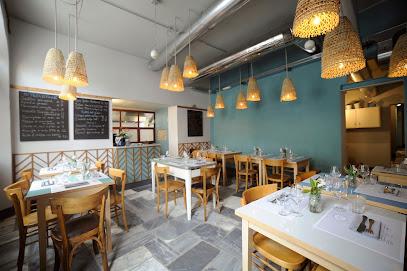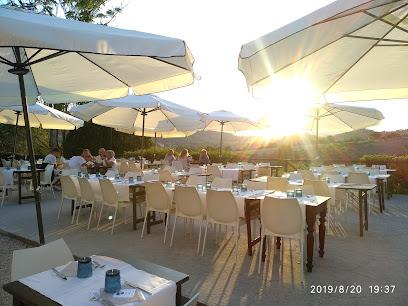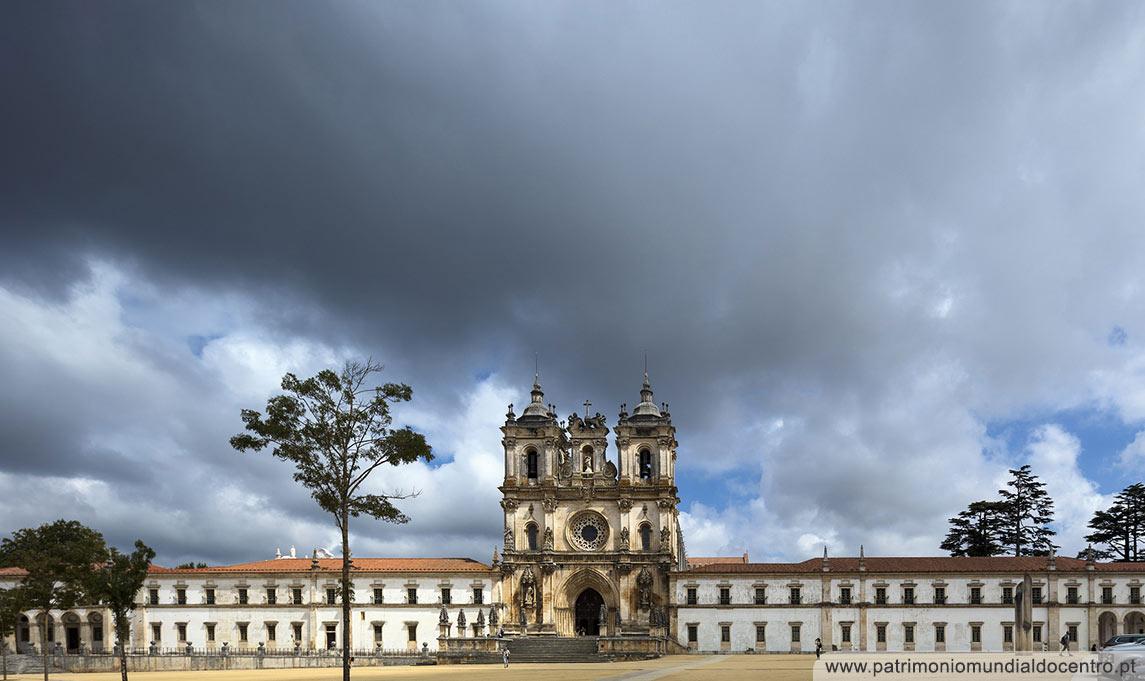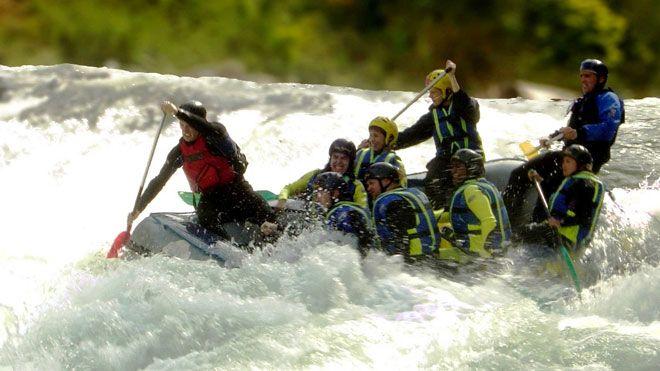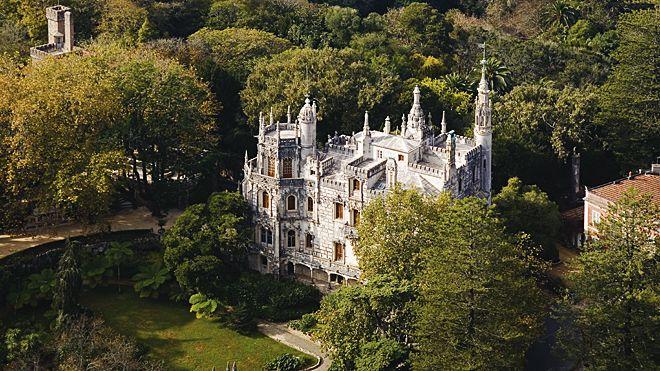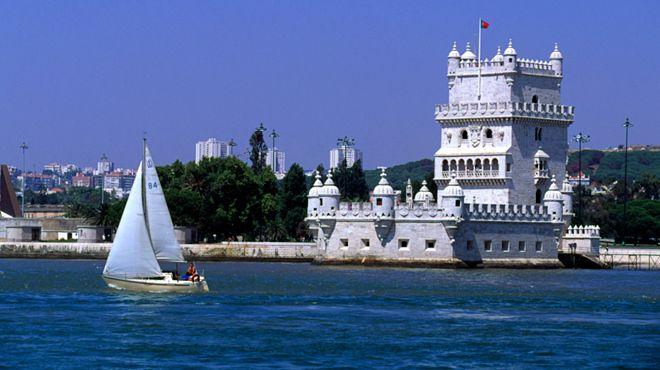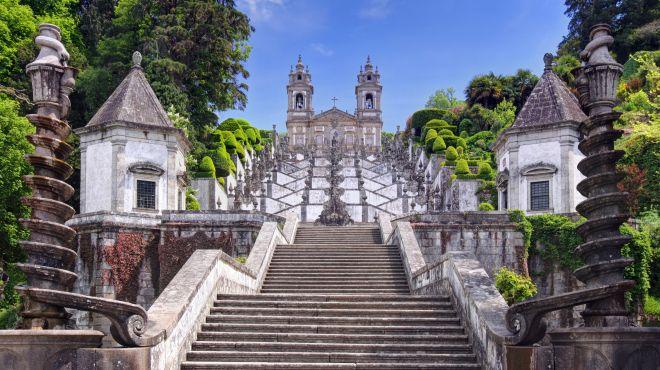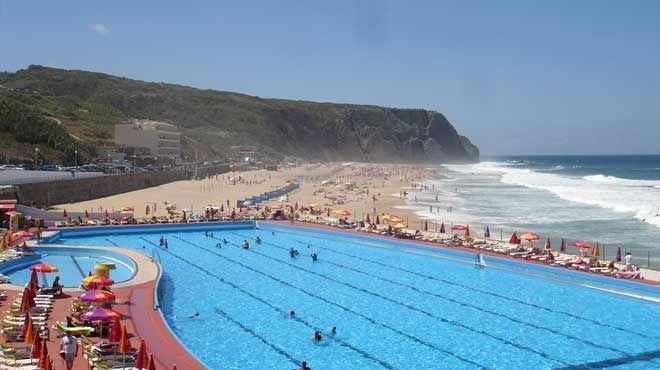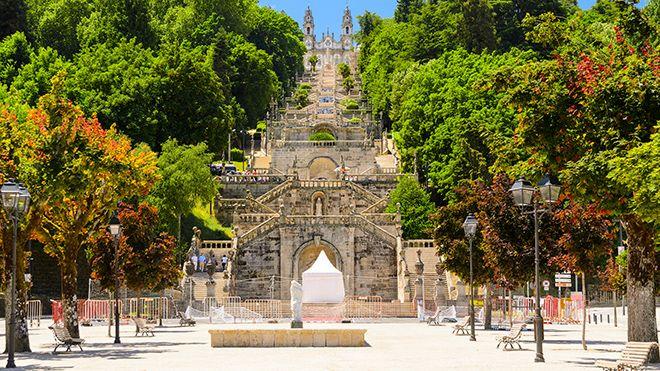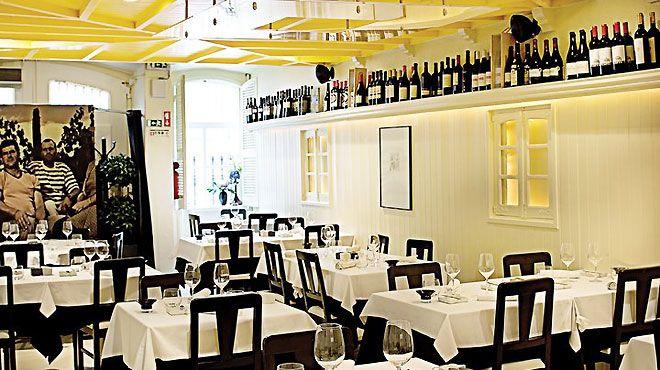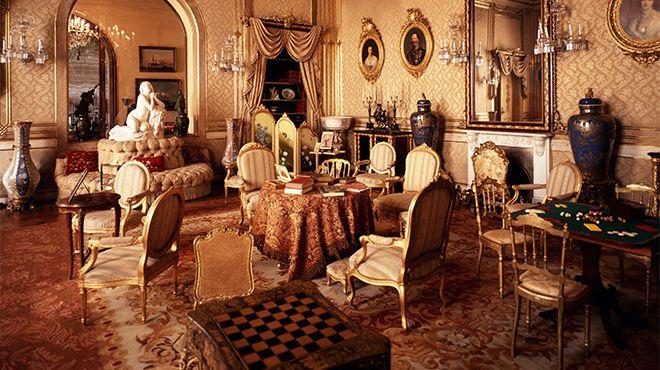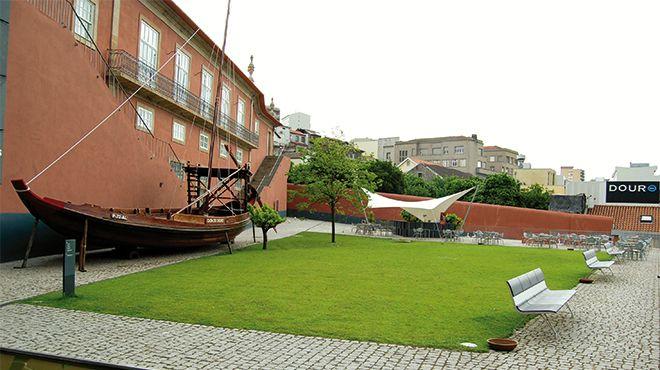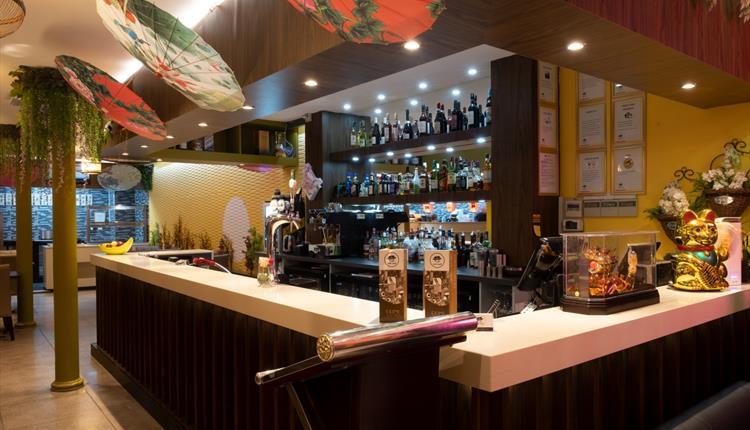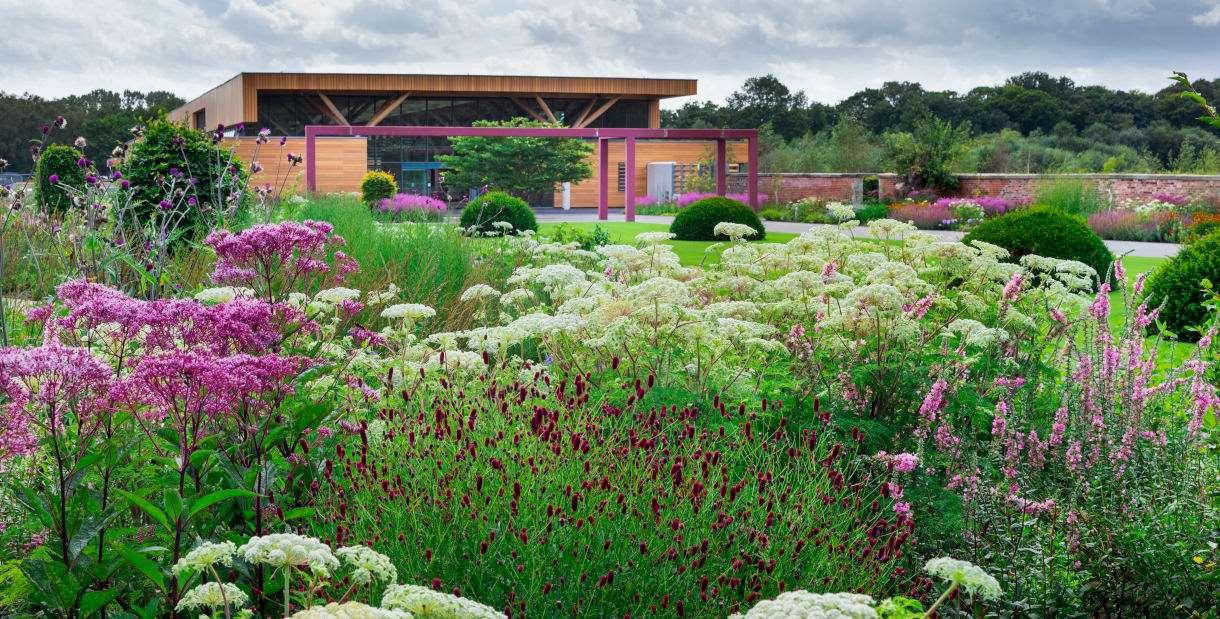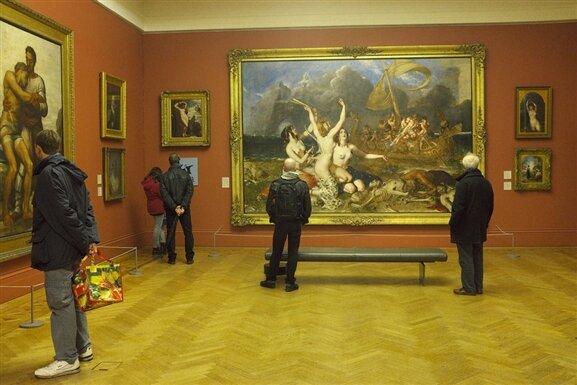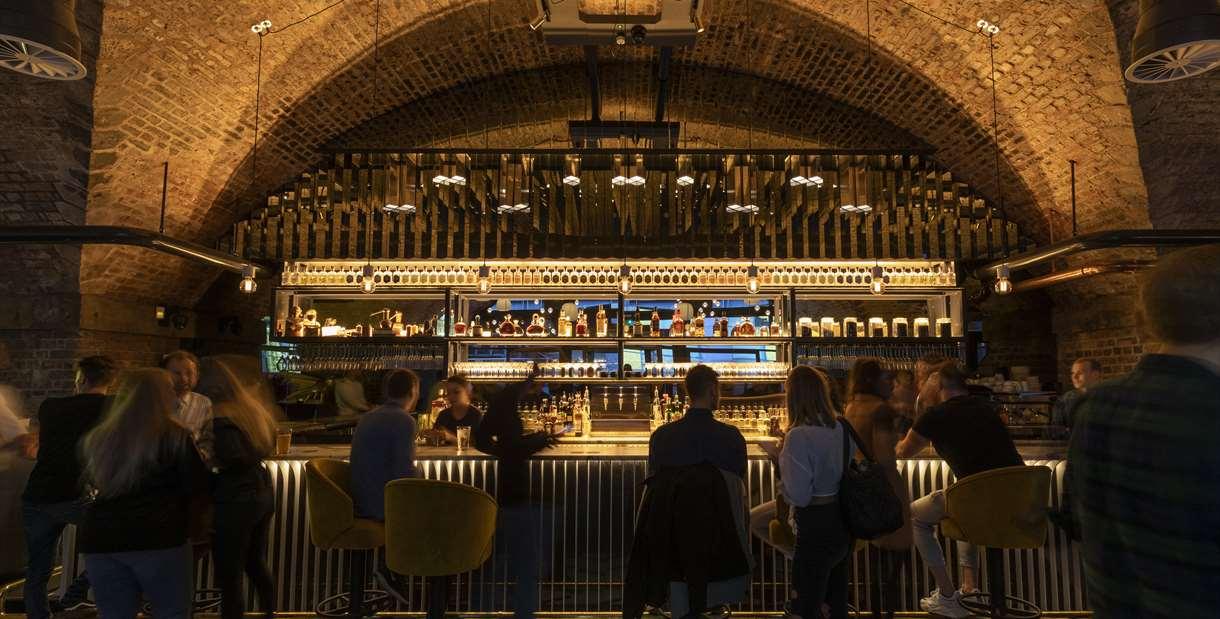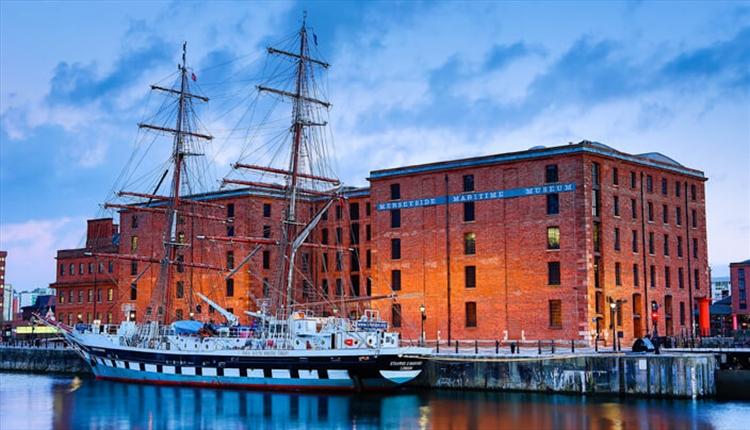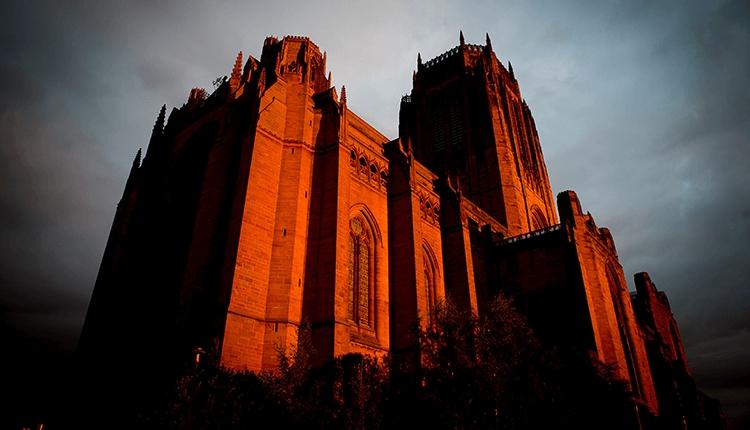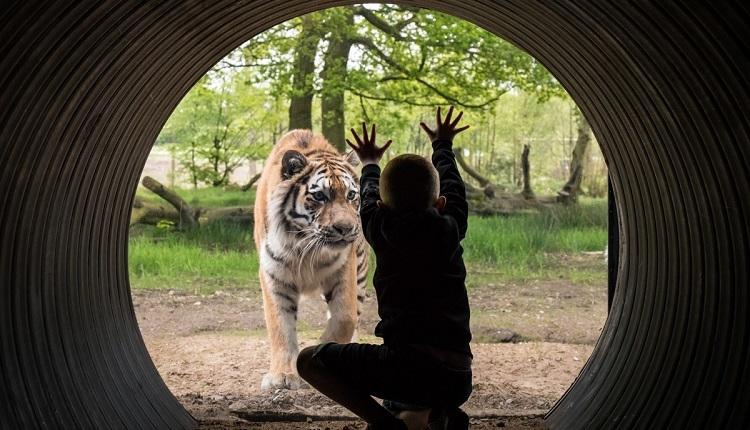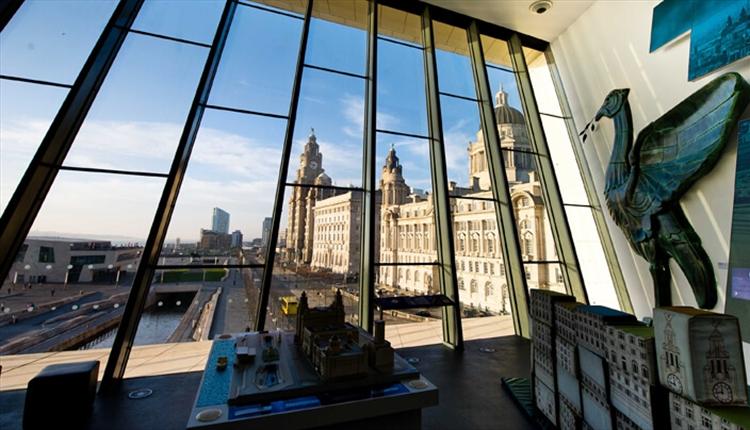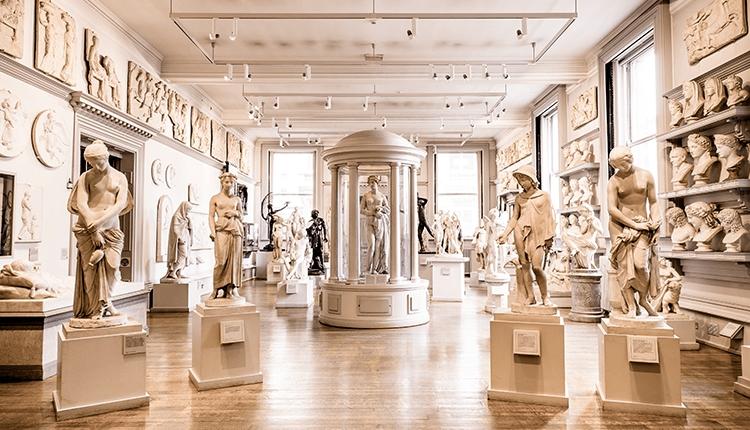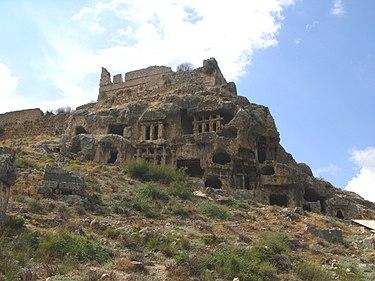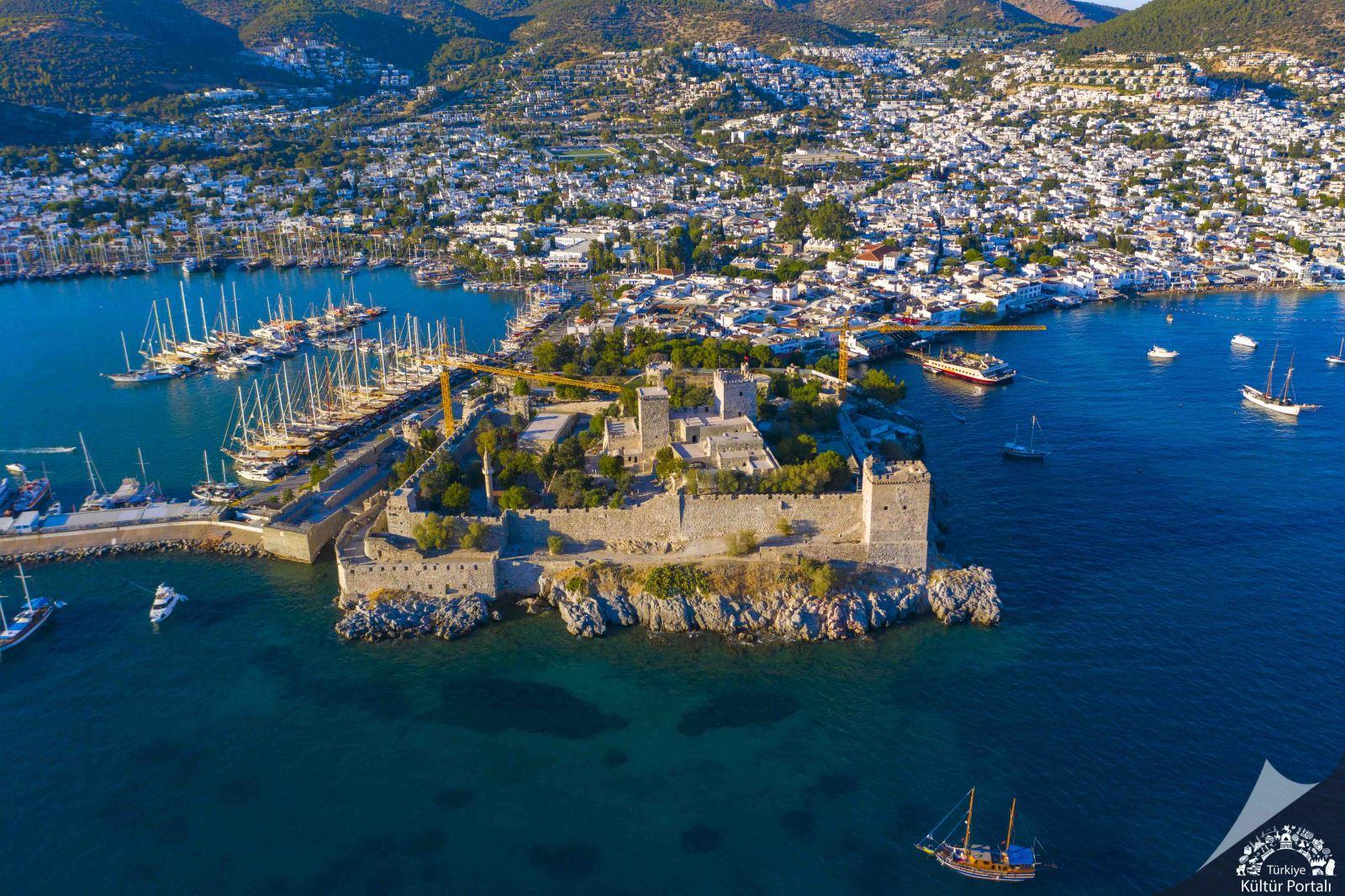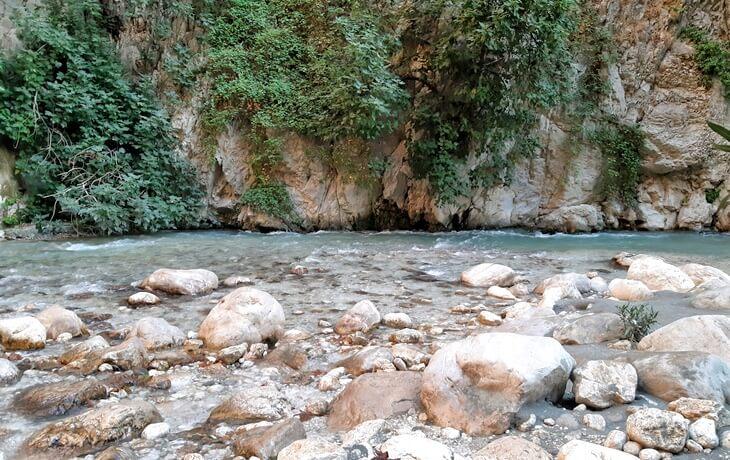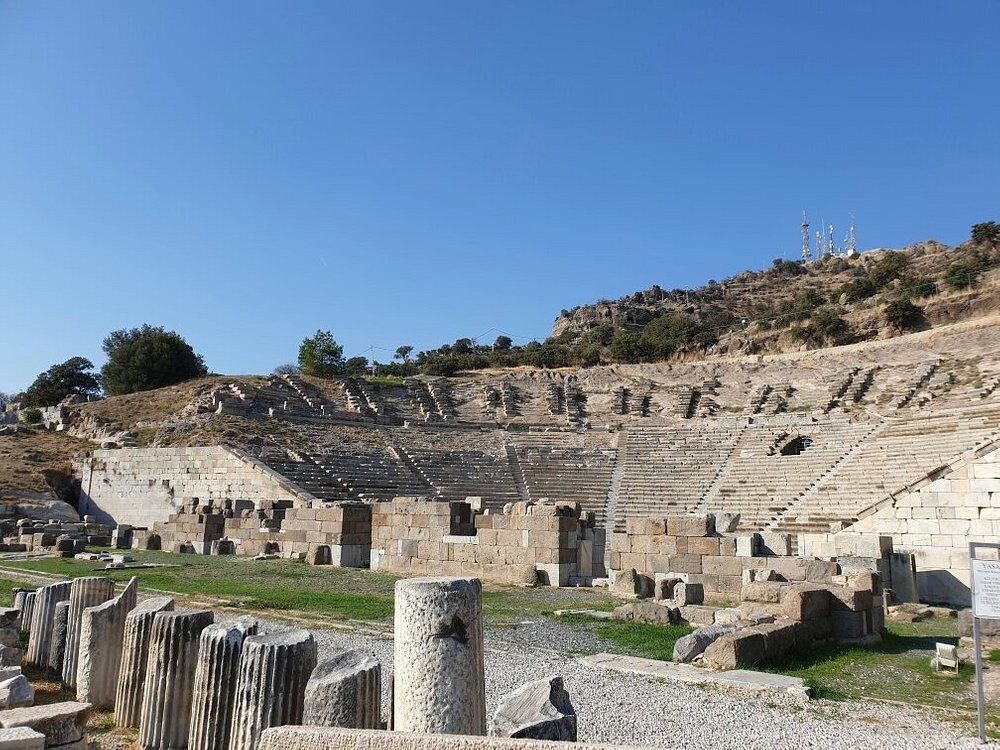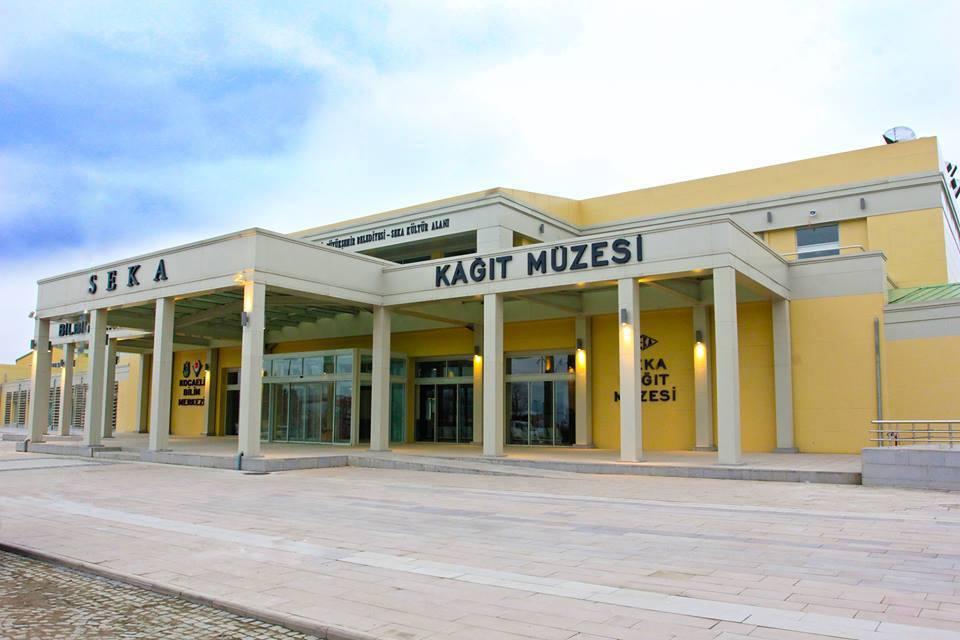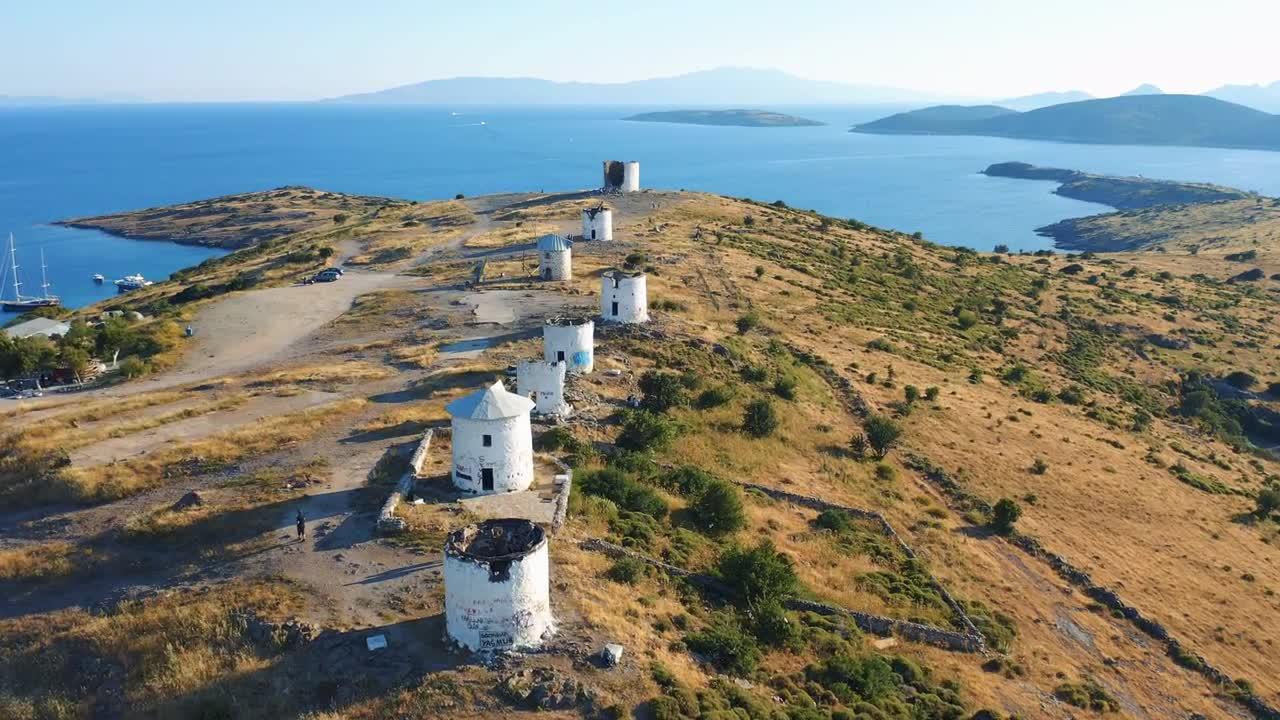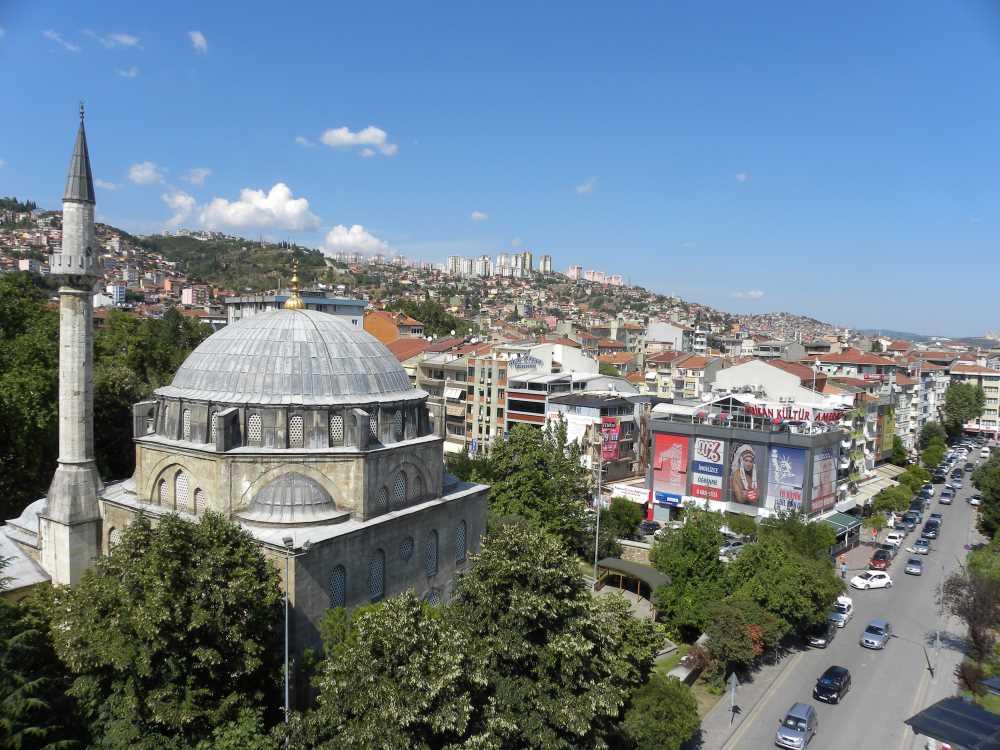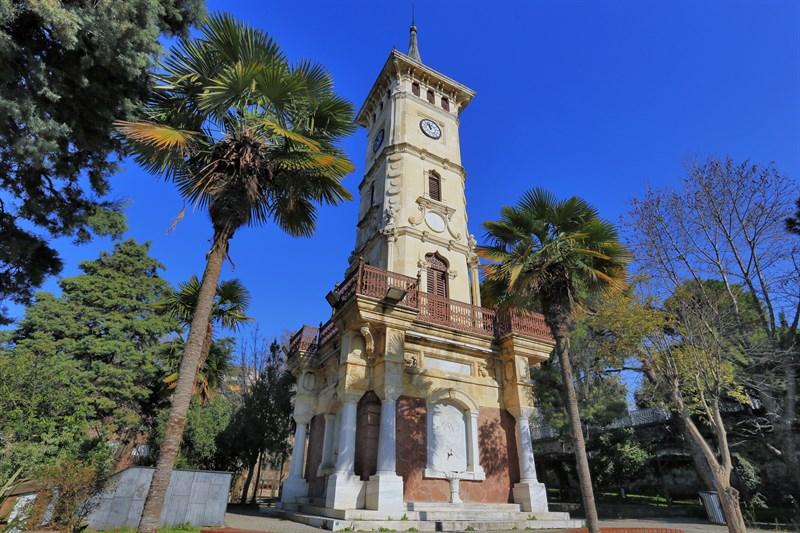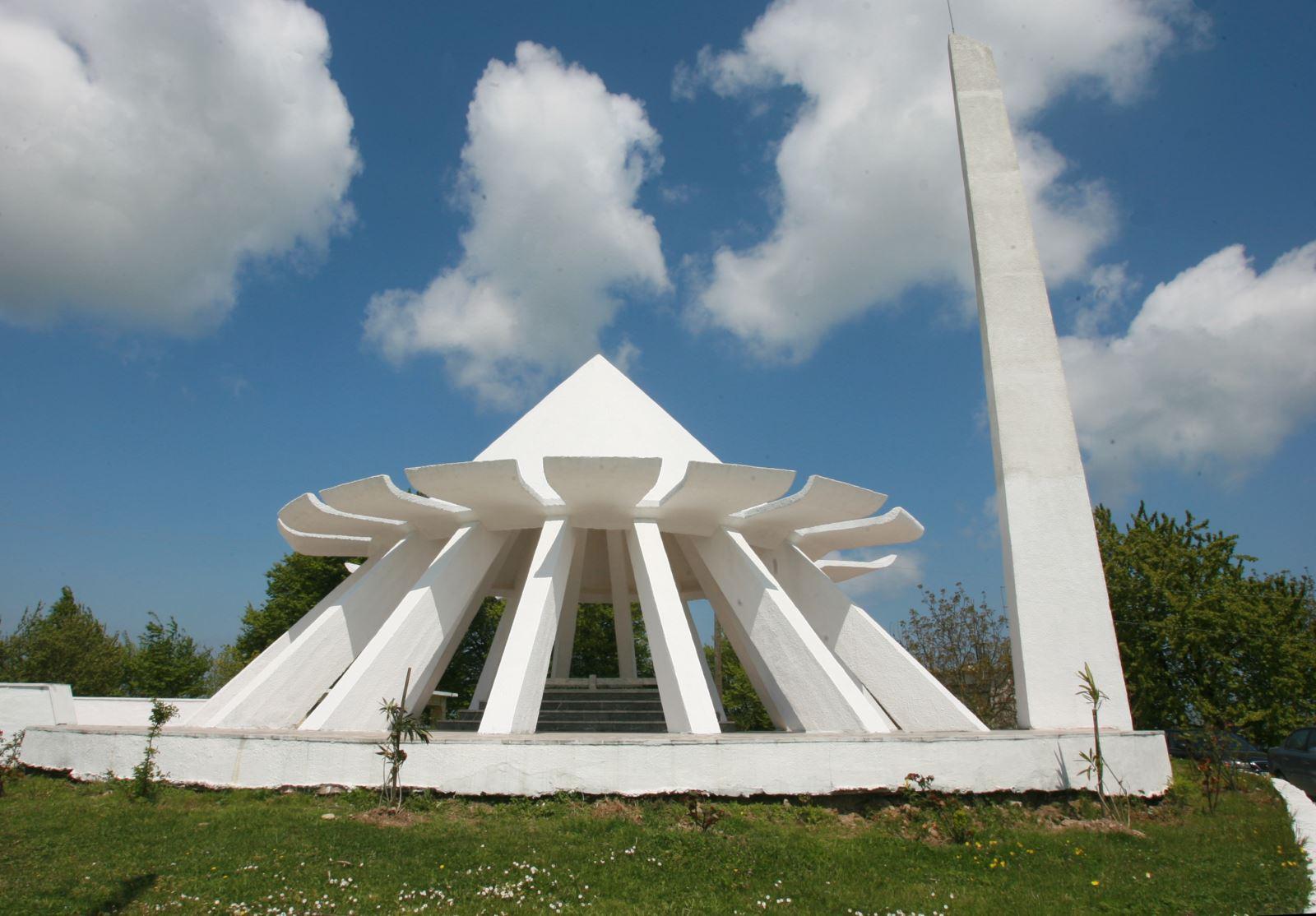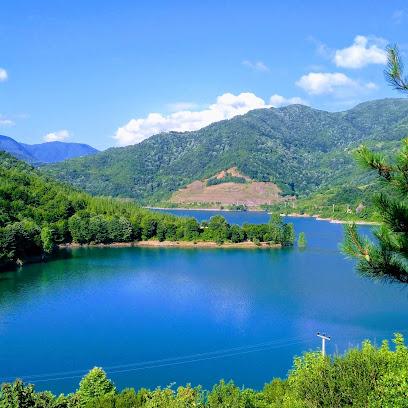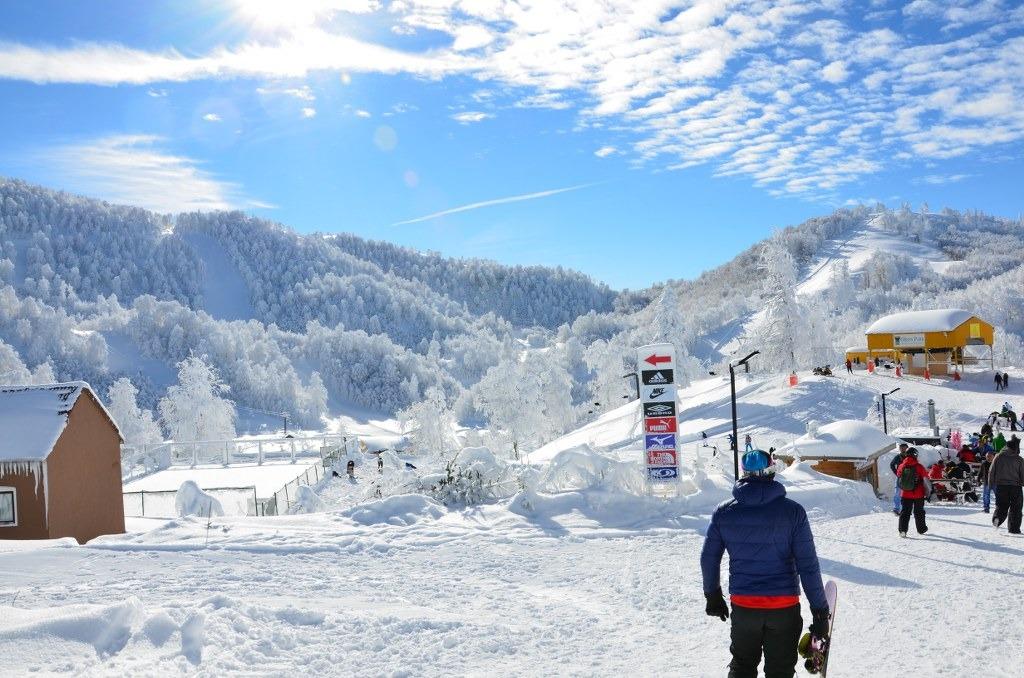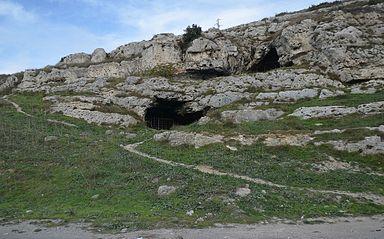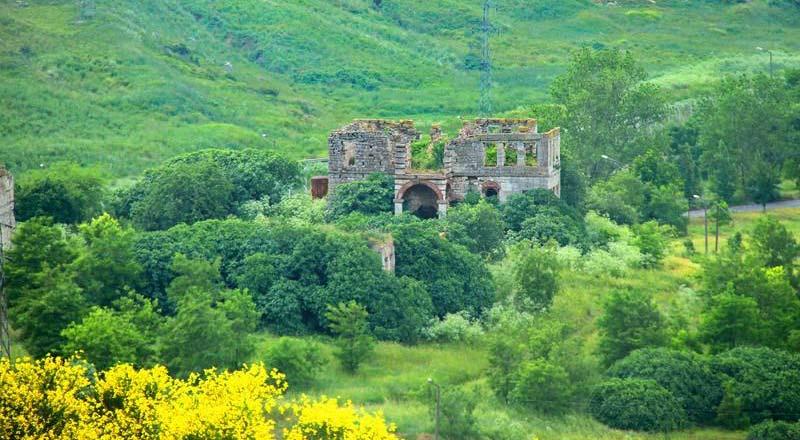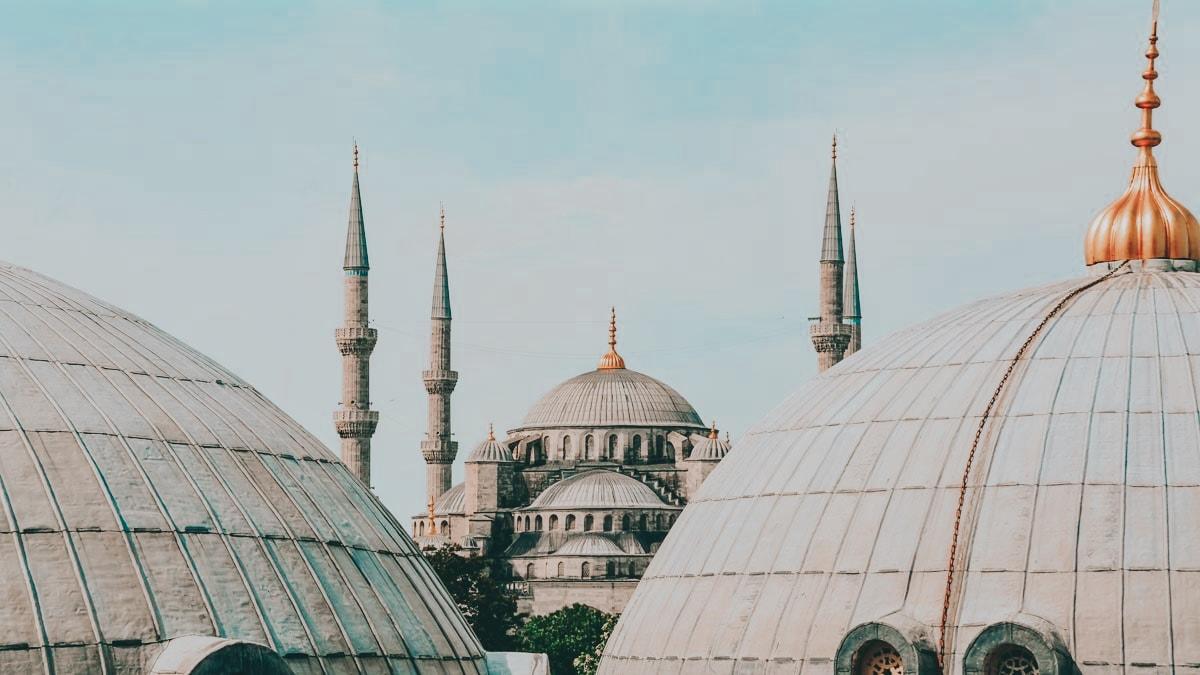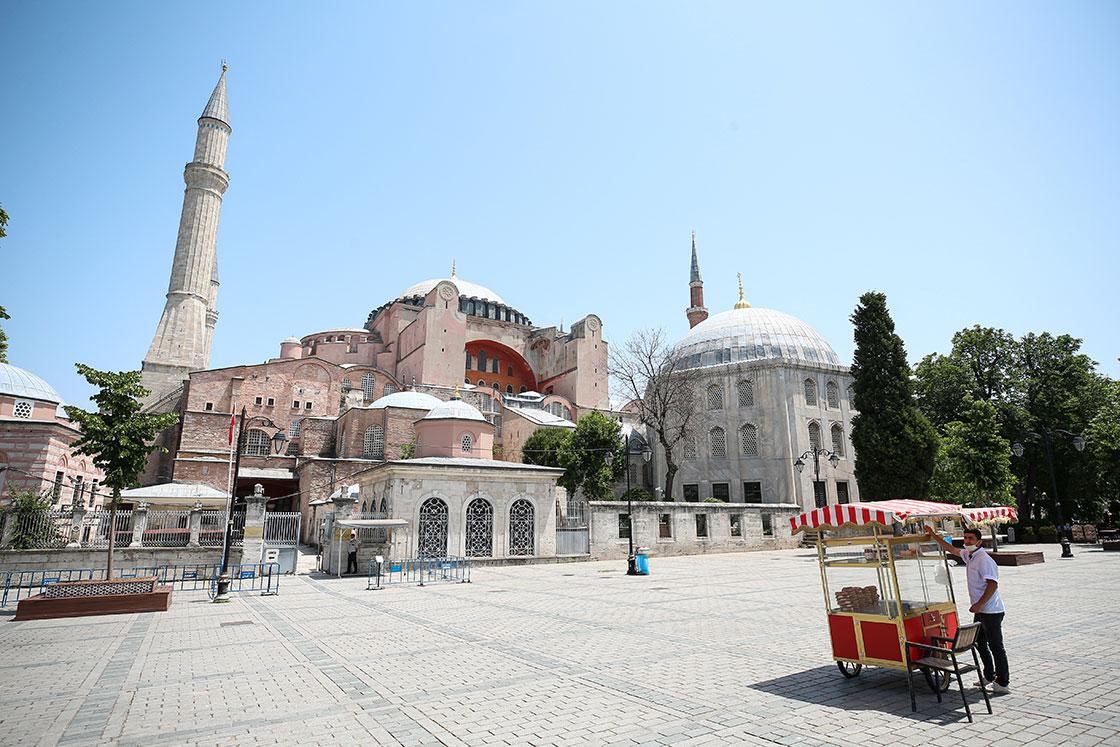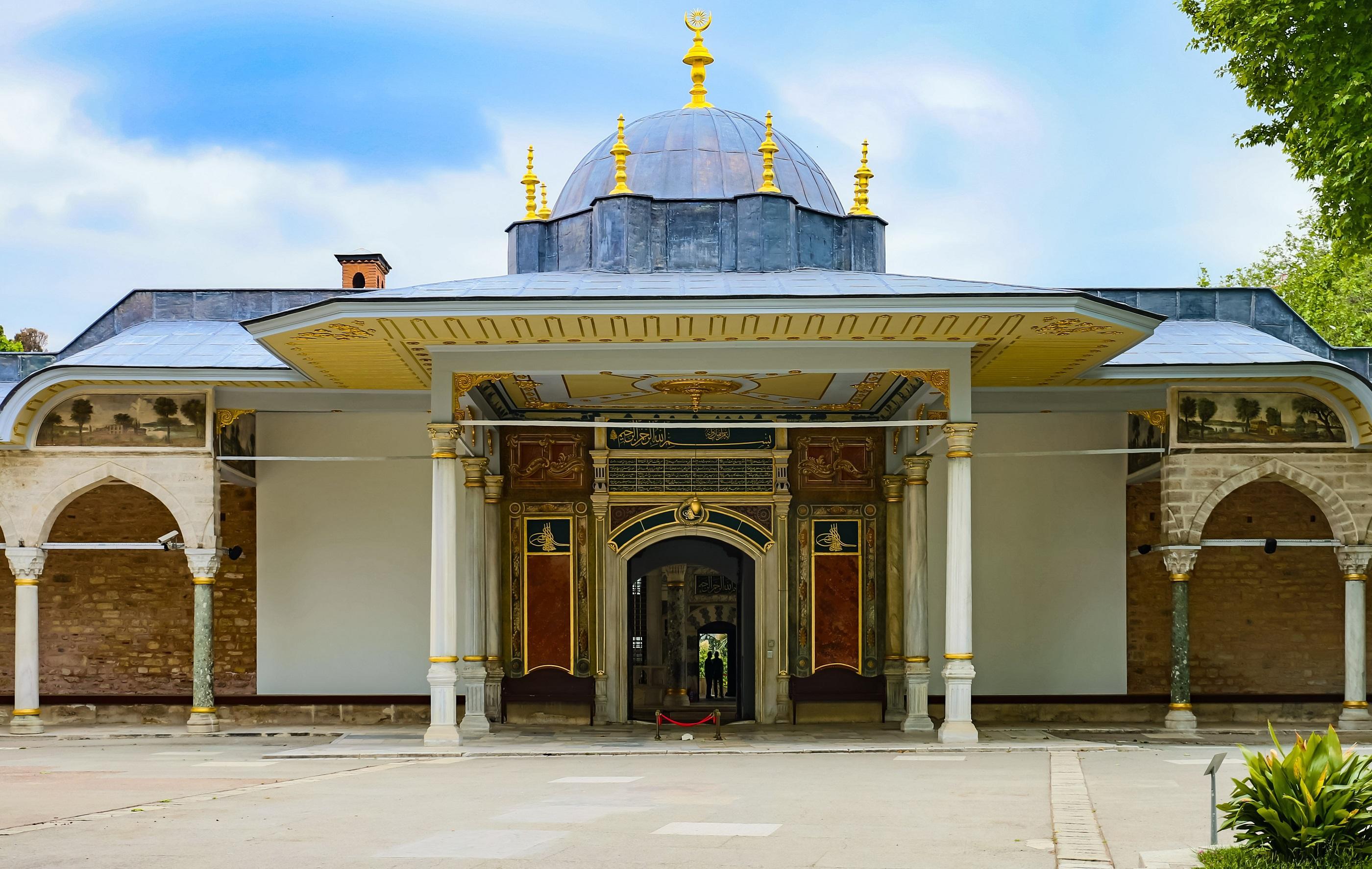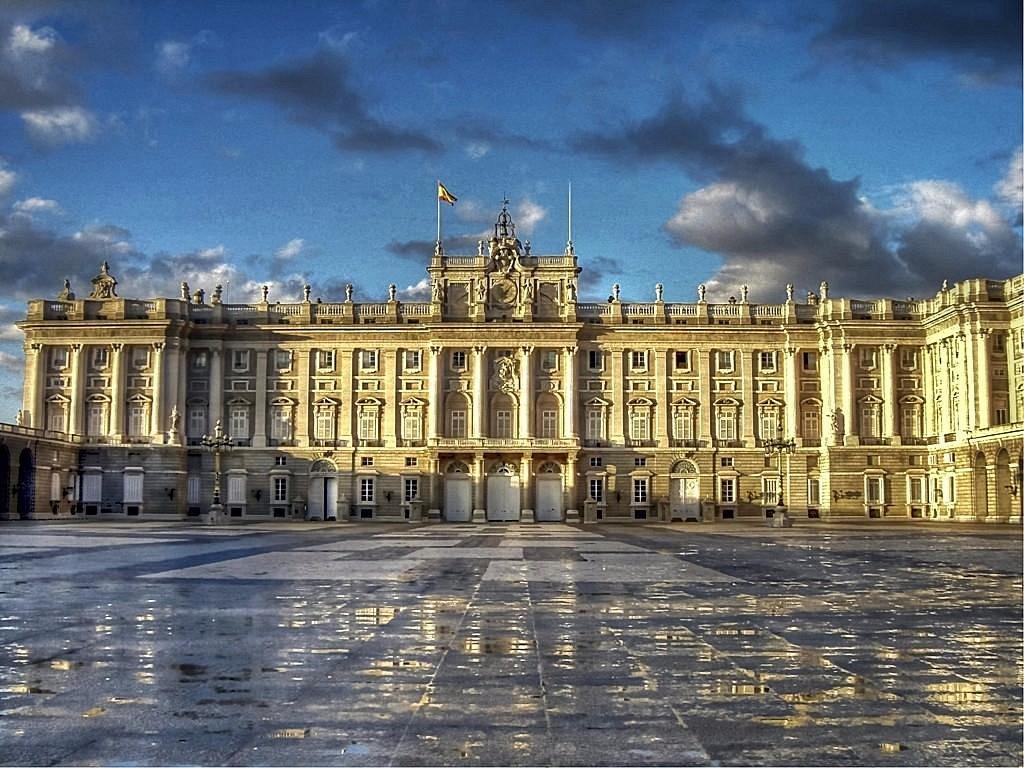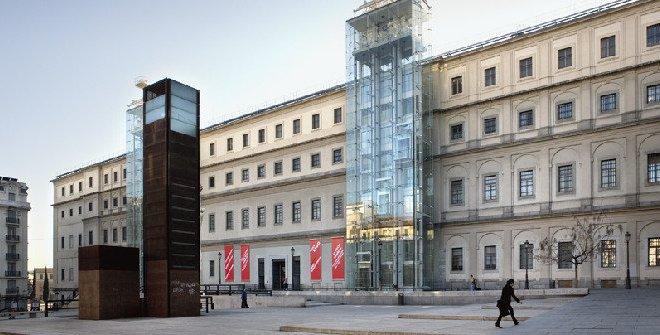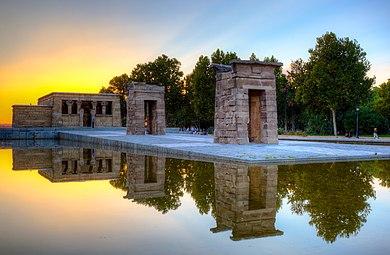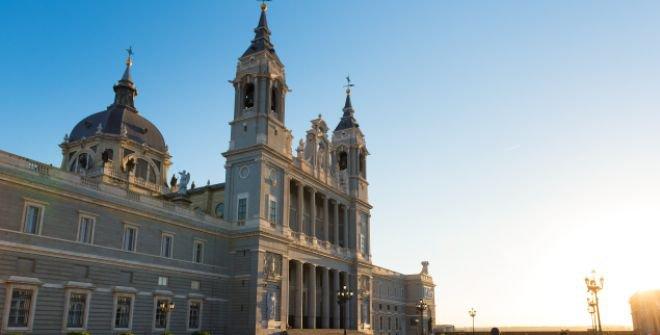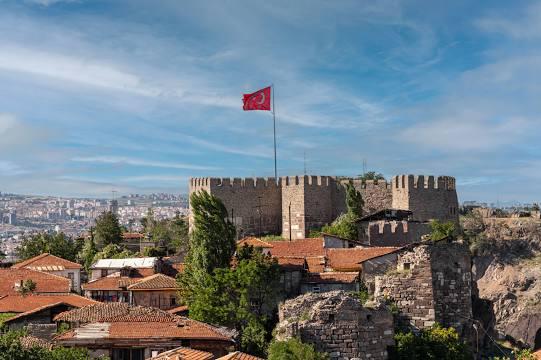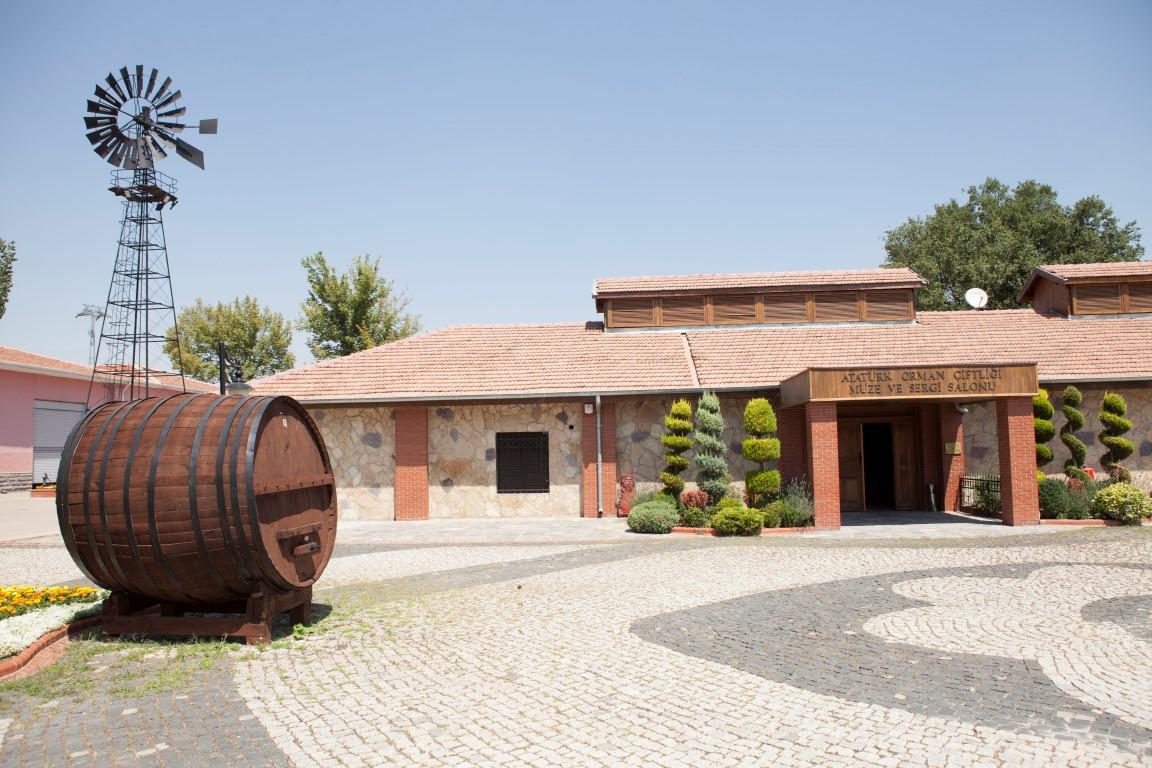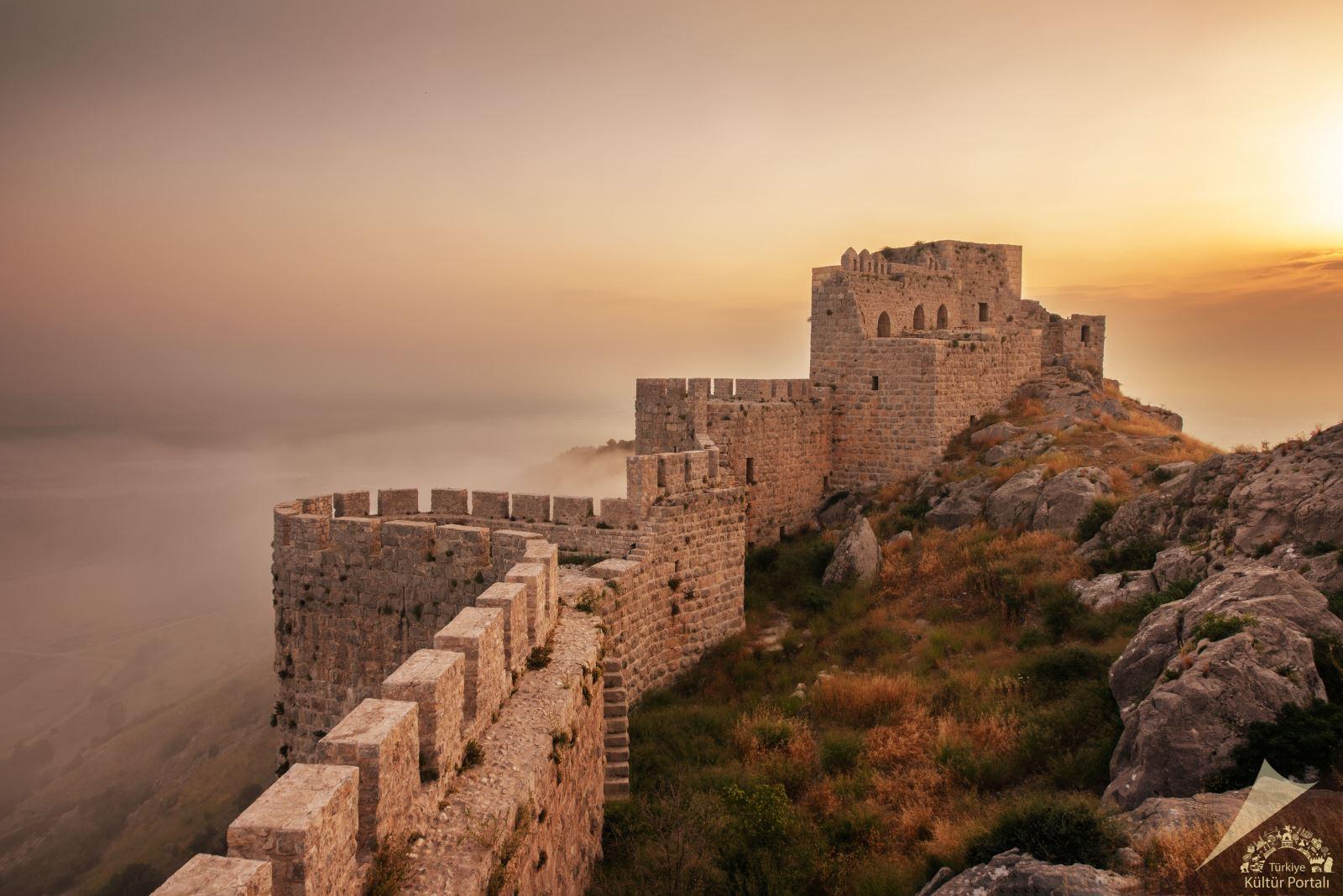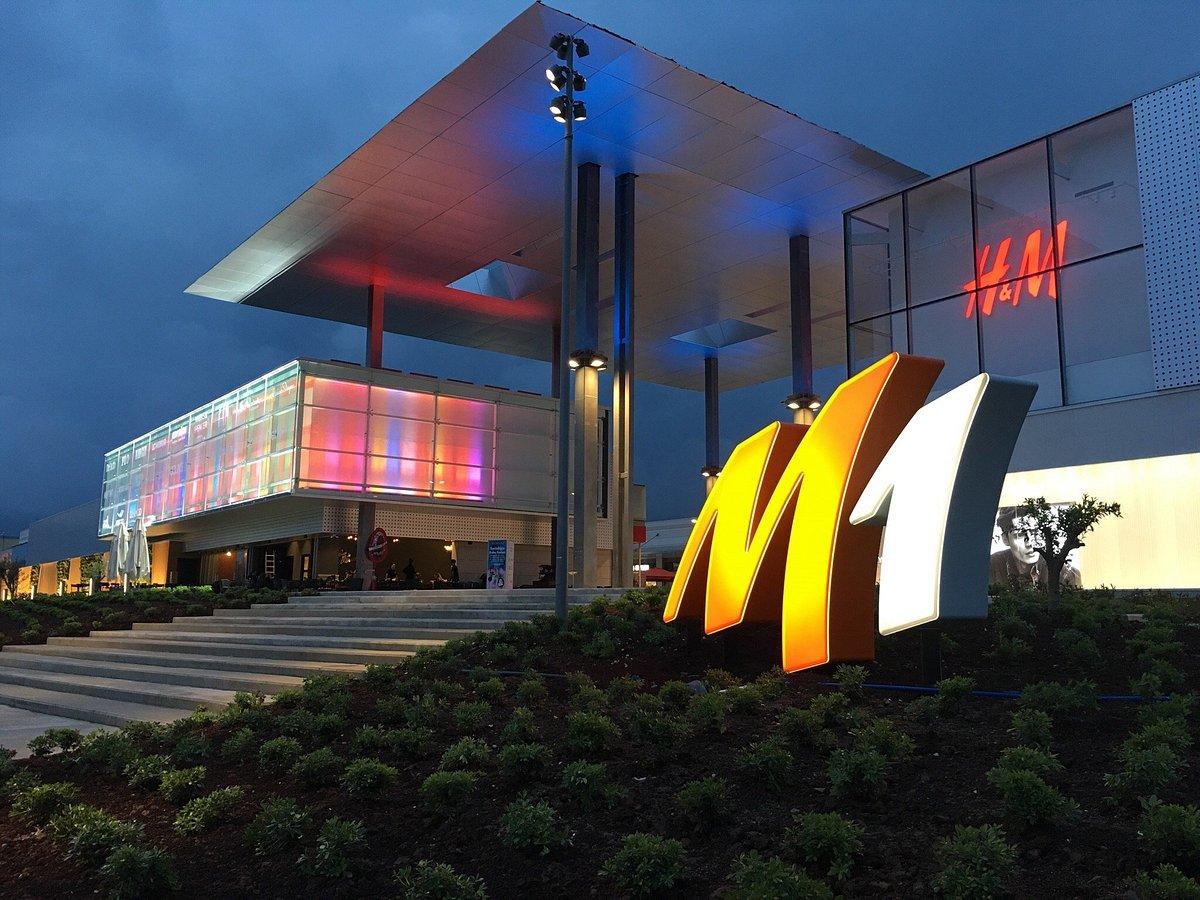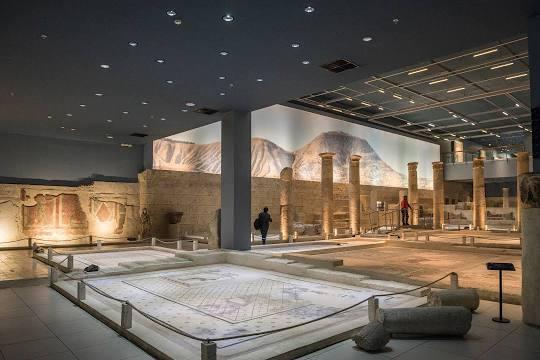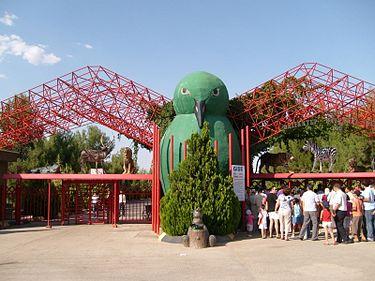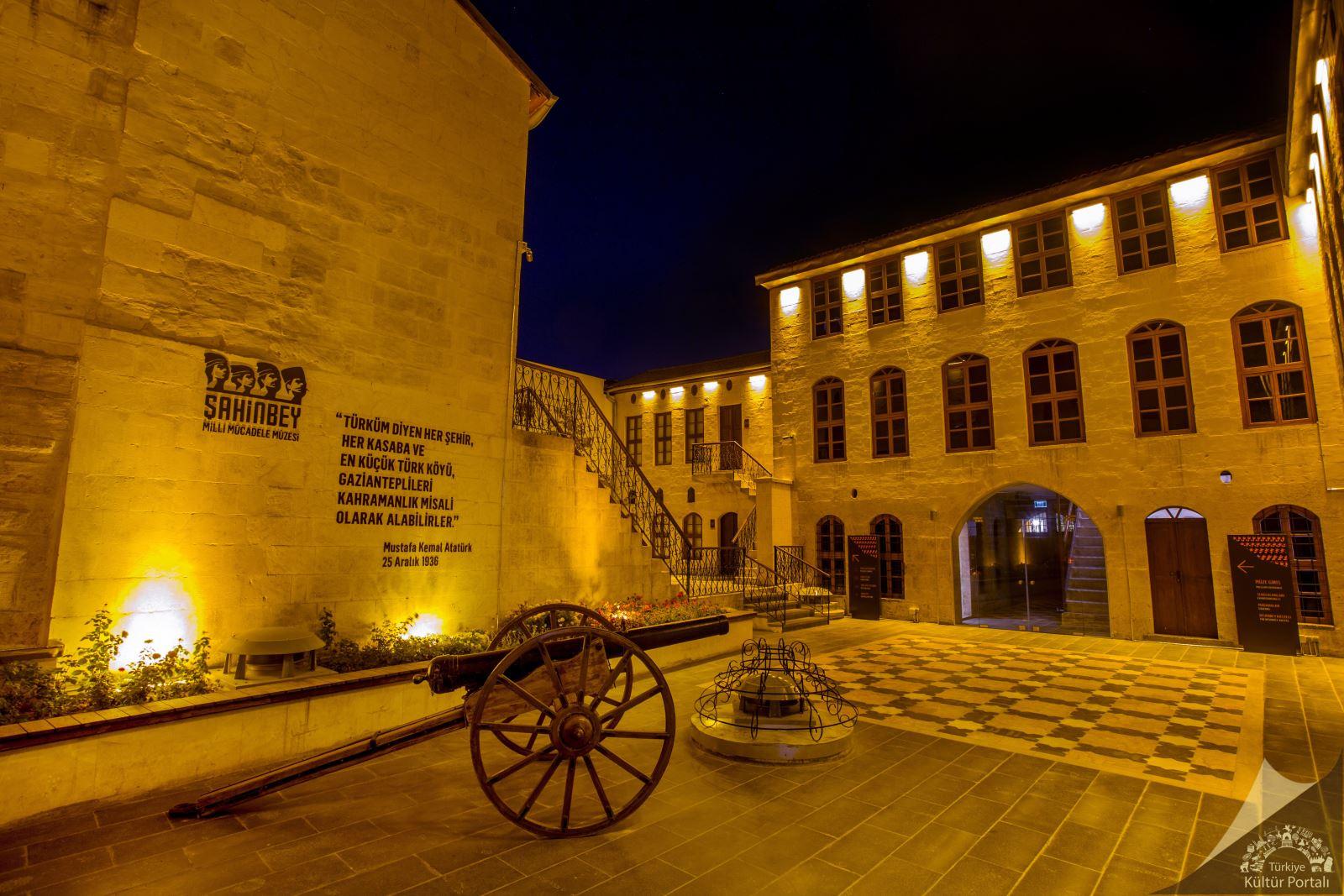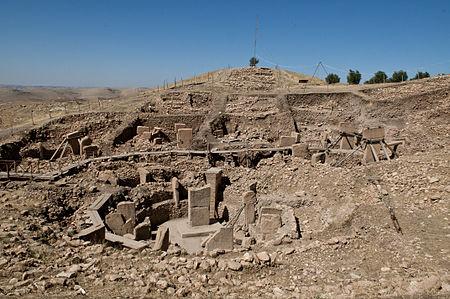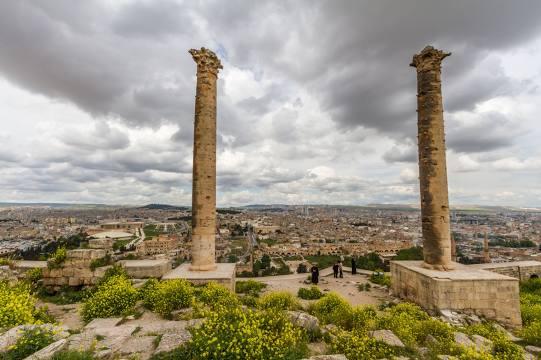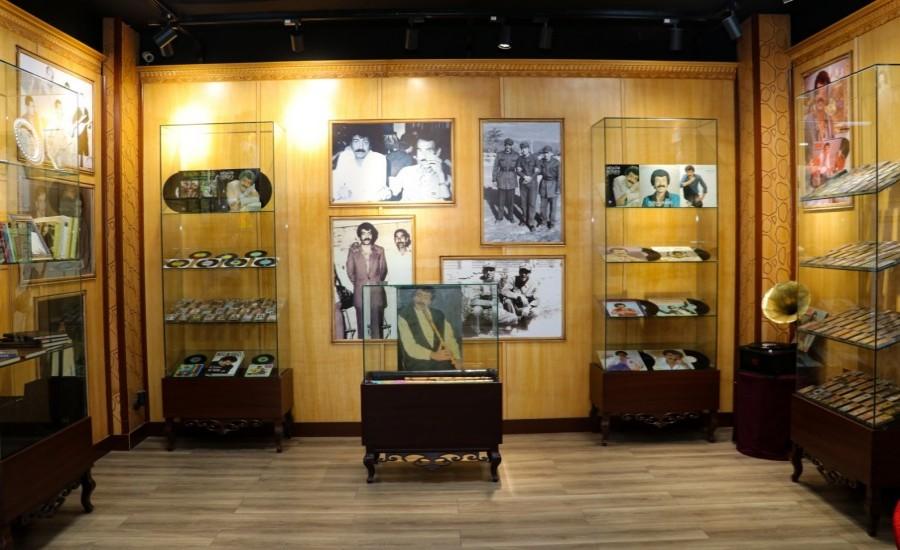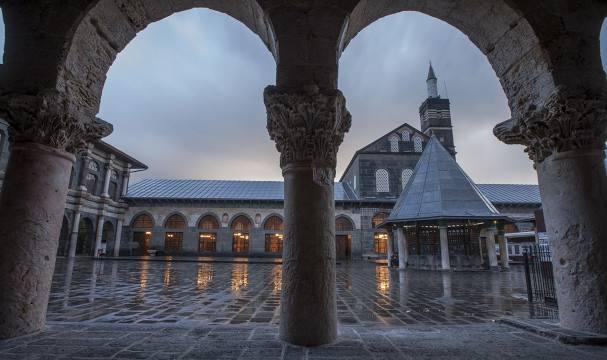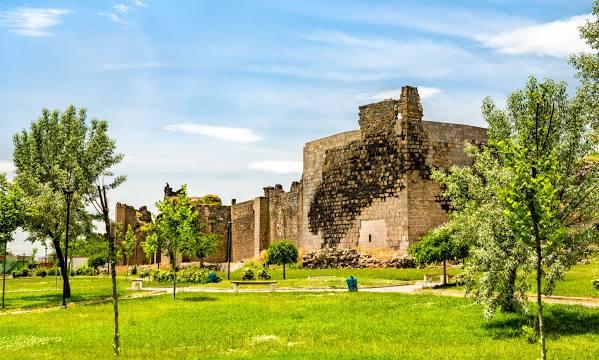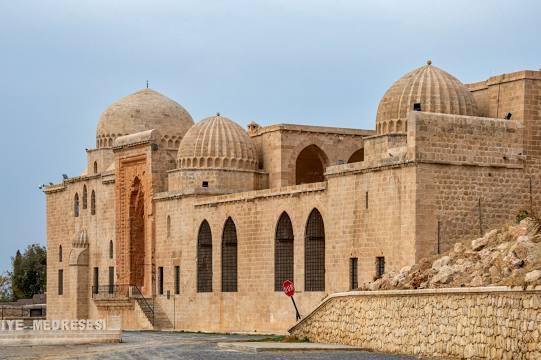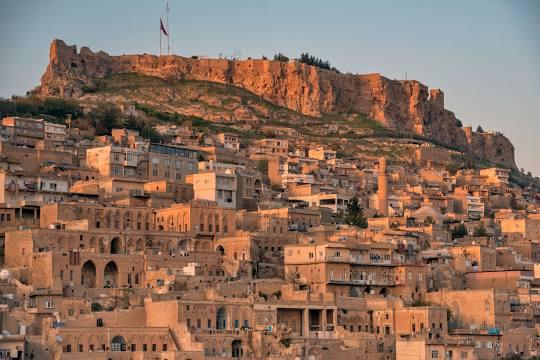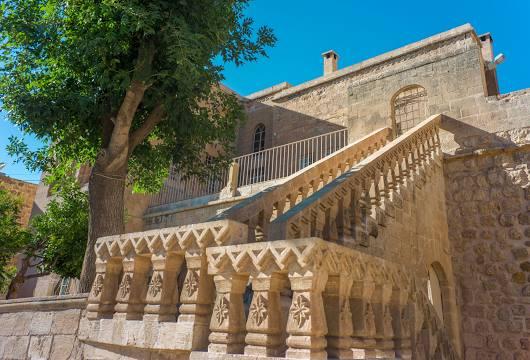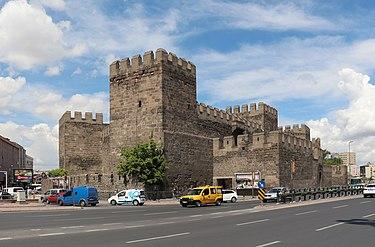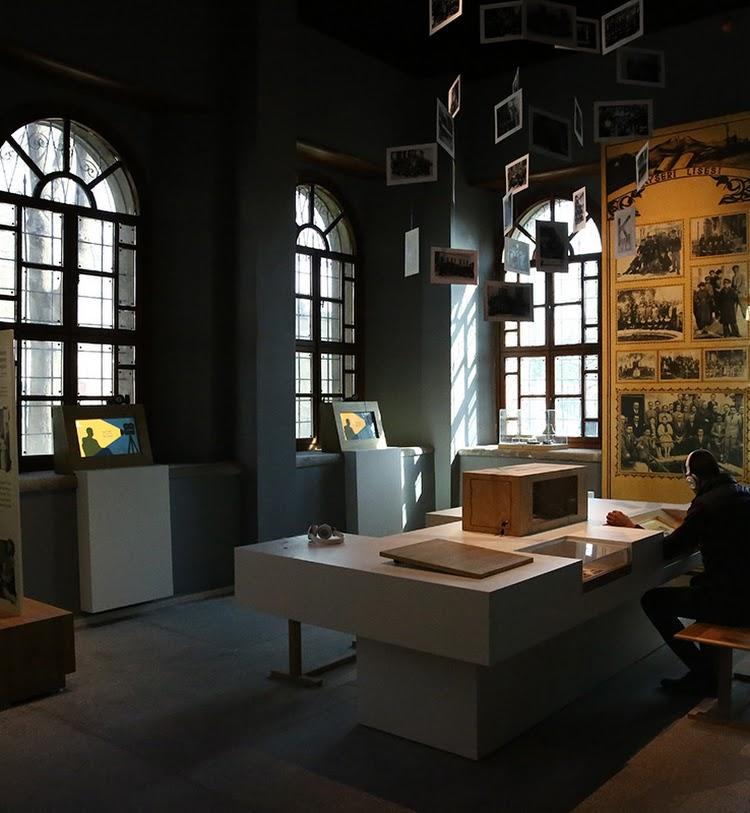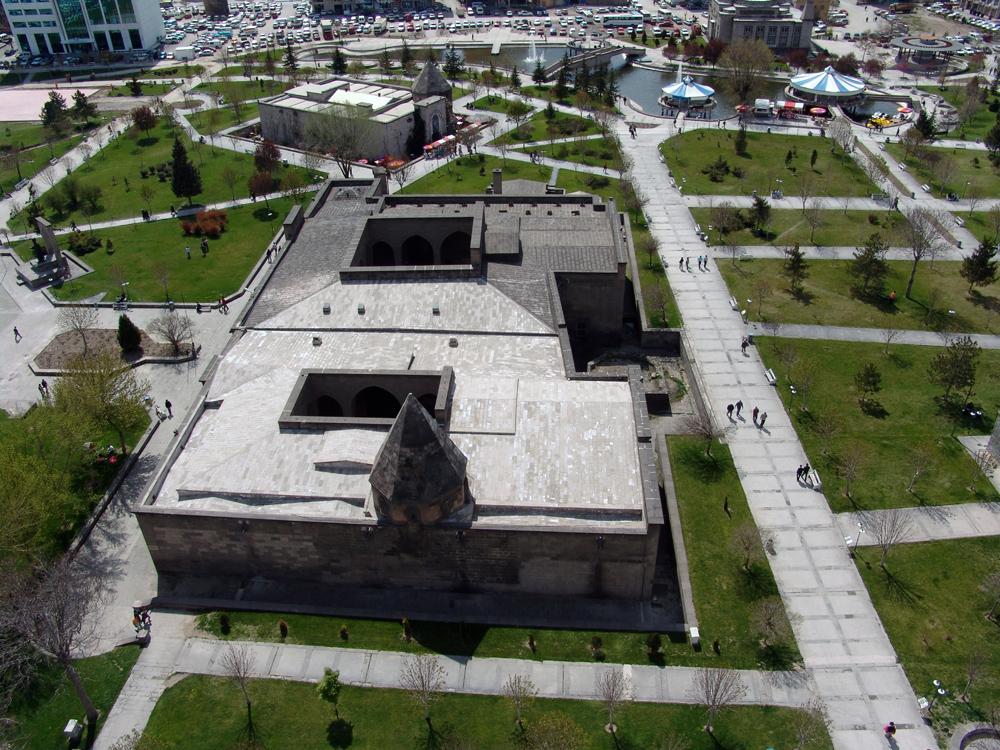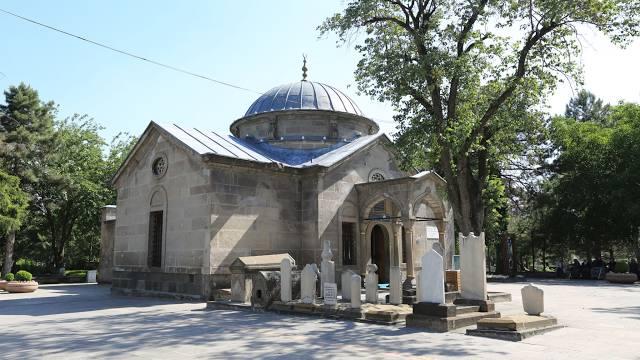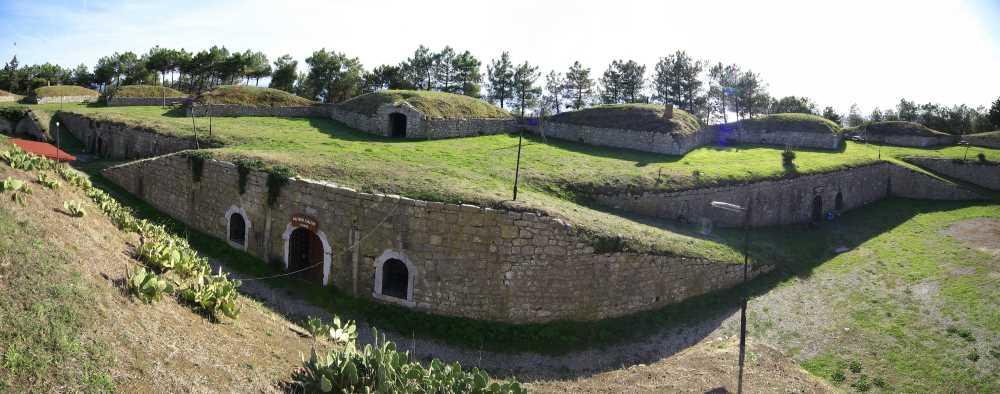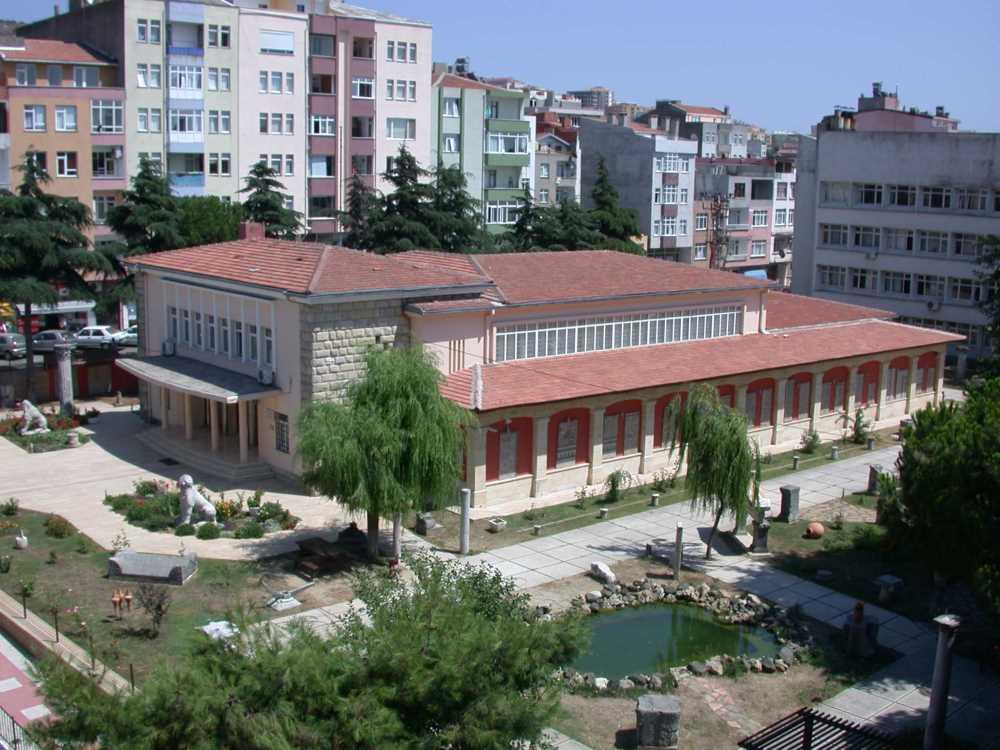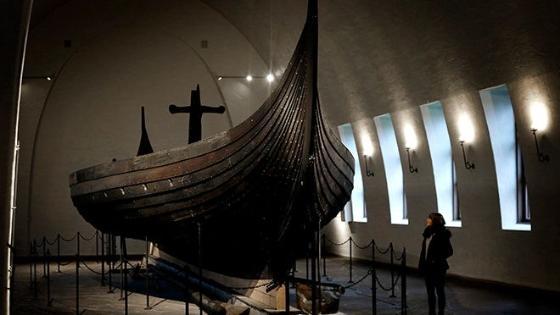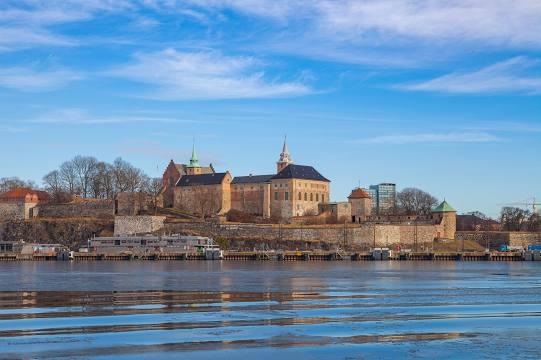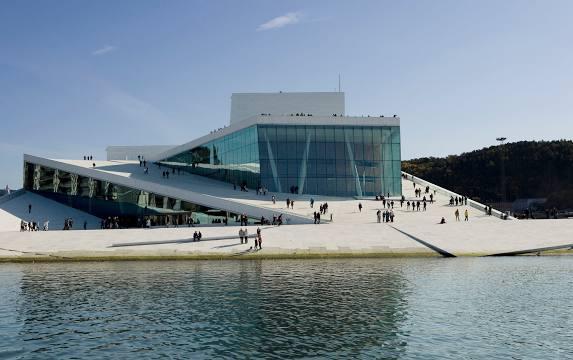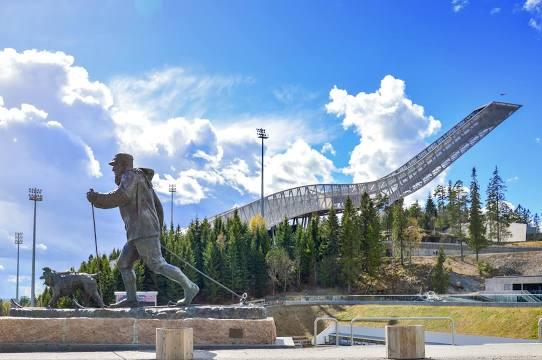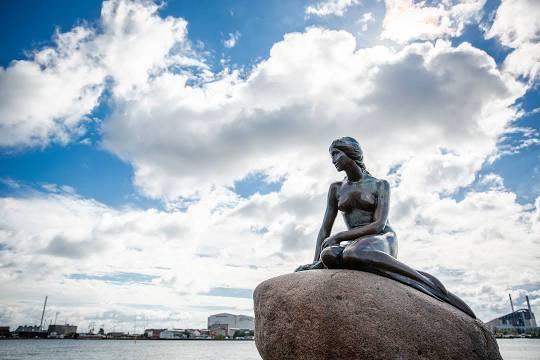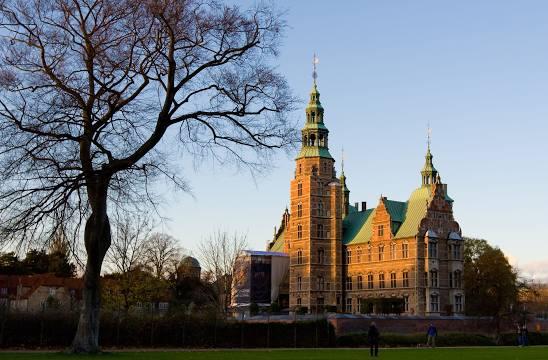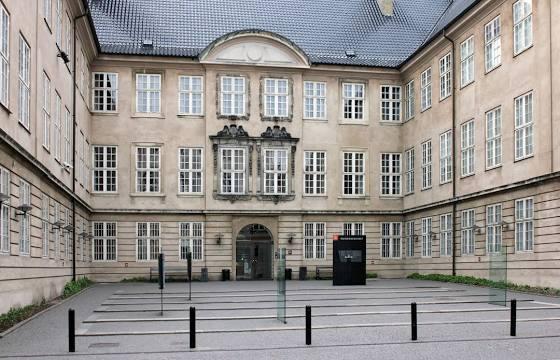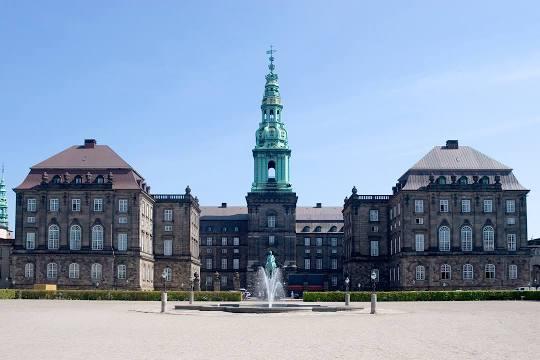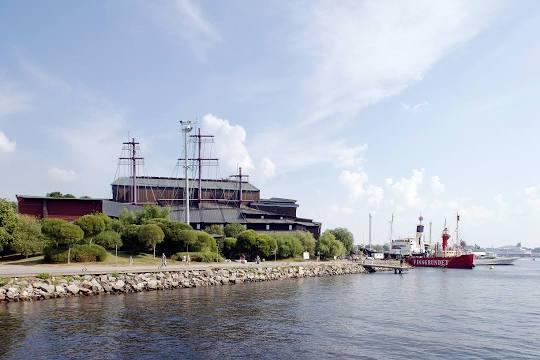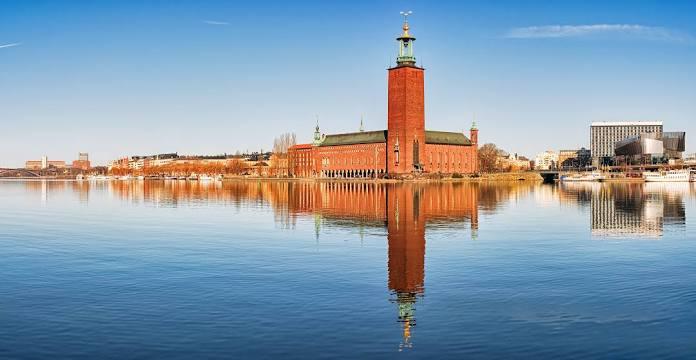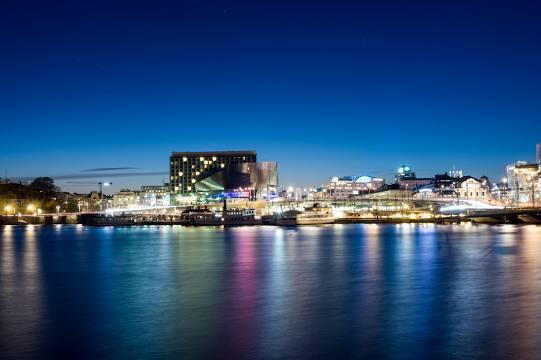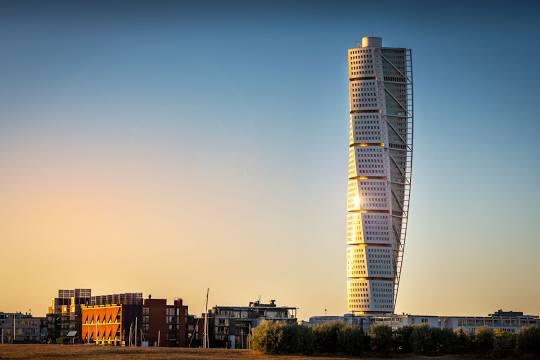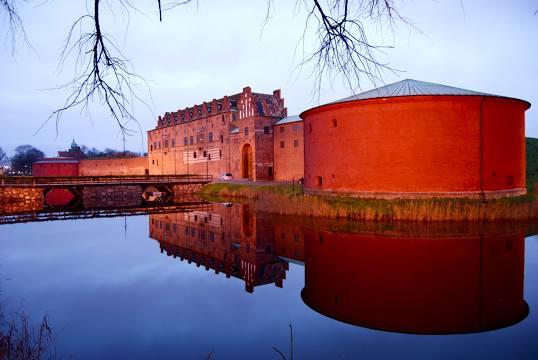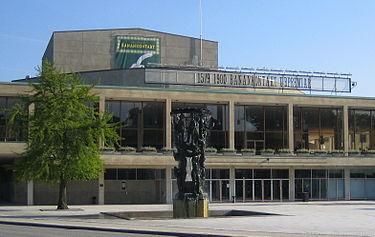The excitement mounts as you travel the banner-lined pathway to Bosworth Battlefield Heritage Centre and Country Park. This is the site where, on 22nd August 1485, one king would be slain, another crowned, and the end of a bloody battle would herald the beginning of the Tudor dynasty and reshape the landscape of English history.
Leicester can claim to be the UK’s Space city and an out of this world experience awaits at the multi-award-winning National Space Centre. Visitors can explore six galleries crammed full of rockets, satellites and meteorites, take in a show at the UK’s largest domed planetarium, and ascend the iconic rocket tower.
Read MoreLooking for an epic mini-golf adventure? Come and play Tropical Trail & Ancient Explorer – the two 18-hole indoor courses at Treetop Adventure Golf. Meet the characters, see the sights and hear the sounds of Leicester’s lushest rainforest.
Read MoreHow can the grave site of an anointed King of England be lost? More to the point, after more than 500 years, how can it be found again? Where do you start, how do you know where to look and how can you be sure of your findings?
Read MoreOn 21 August 1485 Richard III, the last Plantagenet King of England, rode from Leicester to confront Henry Tudor at Bosworth Field. The following day he returned a king slain, his body unceremoniously stripped of armour and slung on horseback for all to see.
Read MorePioneer of popular tourism, Thomas Cook, arranged his first one-day rail excursion in 1841 by chartering a steam train to take 500 passengers from Leicester to Loughborough and back for a shilling.
The success of this and other excursions led Thomas Cook to set up his own travel agency business, earning Leicester the title of the ‘birthplace of popular tourism’. Thomas Cook was one of the oldest travel firms in the world and a company credited with changing the global tourism landscape.
Read MoreThanks to cutting edge virtual projection you will become a part of the spectacular, incomparable universe of Vincent Van Gogh.
Read MoreLiterary Leicester is the University of Leicester's annual free literary festival, open to all. Brought to you by the School of Arts and the Centre for New Writing, the festival hosts events at the university and right across the city, in cinemas, theatres, community halls, schools and more.
Read MoreAn exciting opportunity to get hands-on with a range of artefacts discovered during the search for the Battlefield.
Read MoreThe Purcell School is Britain's oldest music school. Situated on the outskirts of London in Bushey, Hertfordshire, the co-educational boarding and day school is home to around 180 musically talented young musicians, from all backgrounds. The school was awarded the UNESCO Mozart Gold Medal in recognition of its unique contribution to music, education, and international culture.
Read MoreJames Wilton Dance, one of Europe's most in demand dance companies, presents The Four Seasons.
Read MoreThe Clock Tower was built originally as a solution to traffic congestion on the site of the town´s former hay and straw market in 1868.
Read MoreThe Clock Tower was built originally as a solution to traffic congestion on the site of the town´s former hay and straw market in 1868.
Read MoreLeicester is one of the oldest cities in England, with a history going back at least two millennia. The native Iron Age settlement encountered by the Romans at the site seems to have developed in the 2nd or 1st centuries BC.
Read MoreFind cultural treasures, both ancient and modern, all under one roof. Highlights of the British Museum’s collection include Egyptian mummies, the Rosetta Stone and Parthenon Sculptures.
Travel from Ancient Greece and Egypt, to Africa and China, or from Roman Britain to Medieval Europe in more than 60 free galleries centred around the magnificent Great Court.
Read MoreWhat could be more quintessentially English than a delicious afternoon tea served in the charming surroundings of St. George's Park, located in the heart of the National Forest?
Read MoreSet within 280 acres of lakes and parkland, this modern hotel is just 250 yards from Drayton Manor Theme Park with a range of thrilling roller coasters. It offers 2 restaurants and rooms with flat-screen TVs.
Read MoreThe independently owned Old Bank, centrally located on Oxford’s famous High, is a breath-taking statement in design. The 5 star hotel has 43 luxury bedrooms, many with unrivalled views of the city’s most famous landmarks.
Read MoreIf you want to do more than just walk in and grab a few shots with your camera, we recommend a small group tour. We’ve done it and it’s well worth it. An expert will teach you about ancient Roman history, architecture, sport and little known facts that make the Colosseum come alive as you walk through it. You can also combine it with the guided tour of the Forum or Palatine Hill.
Read MoreTickets are valid for two days but also cover the Colosseum and Palatine Hill. That's a lot to see so make sure you arrive there nice and early on both days! The Forum opens from 8:30AM (except holidays), but closing times vary depending on the season. You'll have more time between April and September.
If not booking in advance, use the Palatine Hill ticket office, as the queue will be mercifully short compared to that at the Colosseum!
Una visita al Monumento a Vittorio Emanuele II, o Vittoriano, rappresenta un’esperienza imperdibile per chiunque, italiano e non italiano. Il complesso, pensato nel gennaio del 1878, all’indomani della scomparsa del primo re d’Italia, Vittorio Emanuele II, fu inaugurato nel 1911. Più tardi accolse altre memorie di estrema importanza nell’identità della giovane nazione, come la Tomba del Milite Ignoto.
Read MoreWith three of Rome’s most beloved piazzas within a five-minute walk of each other, the Navona/Pantheon/Campo area may be the prettiest and most picturesque area of the city. Join the beautiful throngs hanging out in cafes, boutiques, art galleries, and wine bars, or peek at a neighborhood museum or monument. If you want nonstop movida, the streets here are busy with chic bicyclists and Vespa drivers, street vendors, merchants, and locals. There is no rhyme or reason to its winding streets and there's something to see around every corner, so take pleasure in a spontaneous wander.
Read MoreThis tour saved the day! We originally booked our Colosseum tour through a different company. Upon arriving in Rome they called and canceled the tour on us. This was at the top of our must-see list, so I quickly searched for a tour that would include it all. I found Show Me Italy through the "Get Your Guide" app and booked a tour that included all the levels of the arena, including the underground.
Read MoreGluten-free pizzas & classic dishes in a redone 1700s farmhouse with a garden full of olive trees.
Read MoreConstruction of the baths was probably initiated by emperor Septimius Severus and completed during the reign of his son, Caracalla. They were inaugurated in AD 216. The baths were located in the southern area of the city, Regio XII Piscina Publica, where members of the Severan family commissioned other construction works: the Via Nova leading to the baths and the Septizodium on nearby Palatine Hill. The site chosen for the baths formerly belonged to a vast garden estate known as the horti Asiniani, developed by Gaius Asinius Pollio during the reign of Augustus.The Farnese Bull sculptural group that was later moved into the Baths of Caracalla was already present at the site in the time of Pollio, who had imported it to display in his gardens.
Read MoreFrom April to September the Mausoleum of Hadrian's opening hours are 9:00AM to 7:00PM. Off-season, you will have to get there early as it closes at 2:00PM. Book tickets in advance to save time queuing!
Read MoreThe Lanificio Cerruti represent an adventure in Biella, began in 1881 but that has its origins in 1770 and that has gone through 250 years of innovation, merging itself, since 1951, with the history of the world’s Fashion, thanks to the inventiveness and creativity of the designer Nino Cerruti.
Drapes of high quality, Italian raw materials that transcend fashion and luxury, entering the dimension of pure beauty.
Read MoreTour per conoscere la bellezza della natura sotterranea, le meraviglie del mondo ipogeo come non le si è mai viste prima, l’emozione della scoperta di un mondo nuovo e affascinante, accompagnati dagli speleologi esperti.
Per chi ha voglia di una tranquilla passeggiata, il ‘‘percorso turistico’’ (è adatto anche a diversamente abili), offre la possibilità di camminare all’interno della grotta ammirando le pitture rupestri preistoriche e il fascino della cavità naturale.
Read MoreThis Florentine piazza was designed by architect Giuseppe Poggi and built in 1869 on a hill just south of the historic center, during the redevelopment of Oltrarno, the left (South) bank of the Arno river. In 1869, Florence was the capital of Italy and the whole city was involved in an urban renewal, the so-called "Risanamento" or the "Renovation" of the city's neighborhoods.
Read MoreYou could easily spend an entire day strolling through the gardens, popping in and out of each wonderful museum. Budget at least two hours to breeze through the essentials, and add an hour if you plan to explore the gardens. Take note that entry into each building is not allowed one hour before closing.
Read MoreThe cathedral was begun at the end of the 13th century by Arnolfo di Cambio, and the dome, which dominates the exterior, was added in the 15th century on a design of Filippo Brunelleschi. A statue to each of these important architects can be found outside to the right of the cathedral, both admiring their work for the rest of eternity.
Read MoreÈ l’esclamazione di Giacobbe dopo che ha sognato la celebre scala appoggiata sulla terra, la cui cima raggiungeva il cielo mentre gli angeli salivano e scendevano su di essa.
Read MoreThe hill of Boboli is the only high ground encompassed (or partly encompassed, at least) within the late 13th century city walls, with the Gate of San Giorgio set in them at their highest point. The hills across the Arno were always considered one of the weak spots in the city's defences, a sensation that only increased with the invention of artillery in the early modern era.
Read MoreGiardino Bardini is a great attraction for tourists who come to eat at this restaurant after long walks. This place is known for delicious coffee. Guests say that the downscale. Many people who use Google didn't grant La Loggetta di Villa Bardini a high rating.
Read MoreLa sagrestia è a pianta ottagonale, con paraste corinzie scanalate in pietra serena. Nel tamburo si aprono finestre rettangolari con frontoni triangolari; nelle lunette si trovano finestre circolari. La sagrestia è sormontata da una cupola a costoloni con lanterna.
Read MoreA group of friars from Pisa founded the church of the Our Lady of Mount Carmel in Florence in 1268. Building began with the financial assistance of the Comune, or municipality, and of Florence's wealthiest familes, and continued until well after the consecration date (1422), being completed only in 1475. The west front of the church was never finished, and it continues to sport a rough stone and brick façade to this day.
Read MoreSantiago viene descritto così: Il vecchio era magro e scarno e aveva rughe profonde alla nuca. Sulle guance aveva le chiazze del cancro della pelle provocato dai riflessi del sole sul mare tropicale e le mani avevano cicatrici profonde, che gli erano venute trattenendo con le lenze i pesci pesanti.
Read MoreUn tipico casolare toscano nel cuore verde del Mugello ospita il nostro ristorante. La natura ci circonda in ogni ora del nostro lavoro e ci regala meravigliosi tramonti che potrete godervi dalla terrazza che affaccia sulla valle.
Read MoreNeoclassical 1829 church with the appearance of a Greek temple, plus stained-glass windows.
Read MoreUNESCO’s World Heritage | The Abbey of Alcobaça, is one of Europe’s most important Cistercian abbeys, given its state of conservation and its architecture, symbolic of the order.
Read MoreA Geopark is a park with a geological heritage of exceptional importance, recognised as such by the European Network the and UNESCO Global Geoparks Network. Its objective is geoconservation, education for sustainable development and tourism.
Read MoreVery close to the historic centre of Sintra is Quinta Regaleira, one of the town’s most enigmatic sights.
The fantastic Palácio da Pena is one of the best examples of 19th-century Romantic revivalism in Portugal.
The harmony and delicate ornamentation of the Tower of Belém suggests a finely cut jewel to all laying eyes on her. However, its contemporaries took a rather different perspective: a formidable and imposing bastion defending the entrance to the Tagus and capable of combining firepower with the St Sebastian tower on the other bank of the river. Its construction was ordered by king Manuel I (1495-1521) and it was built by Francisco de Arruda between 1514 and 1521. The tower was built on a basalt island that was close to the right bank of the Tagus in front of Restelo beach. However, with the gradual change in the course of the river, the tower has ended practically swallowed up by the bank.
Read MoreOn the banks of the Tagus is an apogee of Manueline architecture.
The stairway leading to the top contains 17 landings adorned with symbolic fountains, allegoric statues and other Baroque style decoration along themes such as the Stations of the Cross, the Five Senses, the Virtues, Moses receiving the Commandments and, at the top, the eight biblical figures that contributed to the Condemnation of Jesus. Any visit must take in the view from the bottom of the Stairway.
Read MoreFrom Worship of St. Stephen to Marian Devotion.
Built on top of Mount St. Stephen (Monte de Santo Estêvão), between the 18th and 20th centuries, this Marian shrine is visited by pilgrims from all over the country - especially on September 8, the day of the Nativity of the Virgin and the high point of the feasts in honour of Our Lady of Remedies, which usually include fireworks, musical shows and various sports and recreational activities amidst the dense grove of the pleasant Santo Estêvão Park. The Procession of the Triumph, with its richly adorned paraders, is a highpoint.
The castle´s presence evokes the exciting mixture of legend, poetry and heroism that surrounds the beginning of Portuguese history. On this Monte Largo (Broad Hill) - referred to as alpis latitus in the Latin documents of the time - the nucleus of the future nation of Portugal was first developed.
In circa 968, Mumadona, the countess of Galicia, ordered a castle to be built on this site, where the population could seek refuge from the constant attacks unleashed upon them by the hordes of Vikings, who arrived by sea from the north of Europe, and the Muslims, who made raids from the territories that they occupied to the south.
Restaurants and Cafés
Read MoreThis neo-classical palace was built in the first half of the 19C and was chosen as the residence for the Portuguese royal family when D. Luís I (1838-1889) became king and married an Italian princess, D. Maria Pia of Savoy (1847-1911).
Read MoreThe Douro Museum in Peso da Régua is a regional museum and the ideal place for welcoming visitors and showing them a representation of the memory, culture and identity of the Douro wine region, classified as World Heritage.
Read MoreBuilding work on this basilica dedicated to Santa Luzia and the Sacred Heart of Jesus started in 1904, and lasted until 1959. It is the work of architect Miguel Ventura Terra, who was succeeded by Miguel Nogueira, after the death of his master in 1919.
Read MoreSushi Mami is an authentic Japanese kitchen that has recently opened on Portland Street. At Sushi Mami Japanese Kitchen, they serve both à la carte and an all-you-can-eat menu, which makes you explore all the different flavours of modern Japanese cuisine for a fixed price. Ordering from their smart tablet device, they will serve you freshly made food in no time!
Read MoreReviving the gardens of the historic 156 acre Worsley New Hall estate to create RHS Garden Bridgewater represents one of the largest gardening projects in Europe at this time.
Full planning permission was granted in June 2017, opening the doors to an exciting programme of development with the first phase of the garden opening to the public approximately three years later.
Established in 1823, the Manchester Art Gallery boasts a collection of more than 25,000 items that has been collected over a period of 200 years.
Read MoreManchester Town Hall in Albert Square is one of the most iconic landmarks in the city. Regarded as one of the finest examples of Neo-Gothic architecture in the United Kingdom, it is one of the most important Grade One listed buildings in England.
Read MoreSettle in for an hour or an evening to enjoy immaculate drinks, elegant food and an atmosphere you can soak up and take home with you
Read MoreSubmerge yourself in Liverpool’s historic seafaring past at the Maritime Museum.
Located in the heart of the Albert Dock, it’s the ideal location to explore and uncover the development of the world famous port. Boats, paintings, ship models, ship wrecked objects, uniforms and more.
Read MoreLiverpool Anglican Cathedral is Britain's biggest Cathedral and the 5th largest in Europe. The cathedral is free to enter, however the tower and audio tour is highly recommended. Book tickets through VisitLiverpool by clicking on the 'buy tickets' button to save time!
Read MoreWhere rhino stomp and lions roar, the safari by the city, and so much more. Knowsley Safari is open for online bookings only - All visitors, including members and those with gift tickets need to pick a time slot and book your slot online.
Read MoreThe Museum of Liverpool is the world’s first national museum devoted to the history of a regional city and the largest newly-built national museum in Britain for more than a century. In 2018, it marked 10 years on Liverpool’s UNESCO World Heritage Site waterfront and 10 years of representing Liverpool’s unique and interesting history
Read MoreThe Walker Art Gallery holds a stunning collection of paintings, sculpture and decorative arts spanning over six hundred years. Home to outstanding works by Rubens, Rembrandt, Poussin and Gainsborough, the Walker is also one of the finest art galleries in Europe.
Read MoreTlos. Tlos Ancient City, one of the most important settlements of Lycia
Read MoreMuğla Museum was opened in 1994. An old prison building was chosen as the structure and after restoration, it was put into service as a museum building.
Read MoreBodrum Castle is located in Turkey's port city of Bodrum and was built in 1402 by St. The castle was built by the Knights of St. Peter with the name of St. Peter's Castle. The castle, which has become the symbol of Bodrum, has been used as the "Underwater Archeology Museum" since 1960.
Read MoreSaklıkent is a canyon in the Saklıkent National Park, located in Muğla's Fethiye and Antalya Kaş districts. Saklıkent Canyon is located throughout the Foça District of Fethiye district. The canyon is guided by Karaçay, a tributary of the Eşen Stream.
Read MoreBodrum Antique Theater, or simply Antique Theater, is a theater building in Classical Antiquity, built in the 4th century BC, when Satrap Mausolos reigned, and located in Bodrum, Turkey.
Read MoreKnidos is the most important trade, art and culture city of ancient times. Knidos, the modern city of its age, where the first examples of democracy were experienced, is located at a location where the Aegean Sea and the Mediterranean meet.
Read MoreZeki Muren Art Museum; It is a museum located in Bodrum district of Muğla. The house where Turkish classical music artist Zeki Müren spent the last years of his life before his death was reorganized by the Ministry of Culture and Tourism of the Republic of Turkey and opened to visitors on July 8, 2000.
Read MoreSEKA Paper Museum or SEKA Mehmed Ali Kağıtçı Museum is an industrial heritage museum located in Kocaeli, Turkey.
Read MoreThe windmills in Bodrum are the symbols of the district. Windmills were first built in Bodrum in the 1850s on hills where there is plenty of wind.
Read MoreKaunos is an ancient city located in the Caria region of Ancient Anatolia.
Read MorePertev Mehmet Pasha Mosque, also known as Yeni Cuma Mosque, is a 16th century Ottoman mosque located in the Izmit district of Kocaeli province in Turkey. Its architect is Mimar Sinan. Sultan Suleiman and II. It was built for Pertev Mehmed Pasha, who served as the Ottoman vizier during the reign of Selim I. Construction was completed in 1579.
Read Moreİzmit Clock Tower, also known as Kocaeli Clock Tower, is a clock tower located in the city of İzmit, the center of Kocaeli province in Turkey. It is among the symbols of both the province and the city.
34. Ottoman Sultan II. It was started to be built by the Izmit Municipality after the initiative of the Izmit Governorship, in order to commemorate the 25th anniversary of Abdulhamid's accession to the throne.
Read MoreSelim Sırrı Paşa Mansion is located in İzmit, the center of Kocaeli province in Turkey.
Read MoreThere is limited information about Akçakoca in historical documents. Akcakoca Bey was born in 1234. He is the gentleman who conquered Akçakoca, Sapanca and Kandıra regions as well as present Kocaeli during his lifetime.
Read MoreKirazdere Dam is a dam built on the Kirazdere Stream in Kocaeli between 1987-1999 to produce drinking water.
Read MoreKaraaslan Trout & Camping Facilities The Yuvacık Dam was put into service in 1994, before the dam started to store water. During these years, tourism had not yet developed in Yuvacık. Sedat KARAASLAN, who finds himself in the tourism sector while asking whether it will happen or not, has also been a person who sacrificed himself for tourism in this region. Sedat KARAASLAN, who sees the incoming people as a guest, a family rather than a customer, has brought KARAASLAN Trout facilities to its current position as KARAASLAN KAMPING & ALABALIK with the spirit of a clean and ethical businessman.
Read MoreOrmanya or with its full name Ormanya natural life park is a natural life park located in Kartepe district of Kocaeli.
Read MoreKartepe Ski Center is located in the Kartepe district of Kocaeli Province, between the Gulf of Izmit and Sapanca Lake.
Read MoreYarimburgaz Cave, one of the oldest settlements in the world with its 400,000-year history, was granted the status of 1st Degree Archaeological-Natural Site in 2001. The cave is one of the settlements on the transition route of Homo erectus, which spread from Africa to Europe.
Read MoreOnce upon a time, gunpowder production was done with mortar and animal power. This resulted in the production of gunpowder in different thicknesses on each workbench.
Read MoreSultan Ahmet Mosque or Sultanahmet Mosque was built between 1609 and 1617 by the Ottoman Sultan Ahmed I on the historical peninsula in Istanbul by Architect Sedefkar Mehmed Ağa.
Read MoreHagia Sophia Museum, or today officially the Hagia Sophia-i Kebir Mosque-in Sheriff, is a mosque and former basilica, cathedral and museum located in Istanbul.
Read MoreTopkapi Palace is the palace in Istanbul Sarayburnu, which was used as the administrative center of the state for 400 years of the 600-year history of the Ottoman Empire and where the Ottoman sultans lived. Close to 4,000 people once lived in it.
Read MoreA large network of historic covered market streets selling leather, jewelry and souvenirs.
Read MoreThe Prado Museum is a museum and art gallery located in Madrid, the capital of Spain. Founded as a museum of painting and sculpture, it also contains more than 5,000 drawings, 2,000 prints, 1,000 coins, Medals, and about 2,000 ornaments and works of art.
Read MoreThe Royal Palace of Madrid is the residence of the Spanish Royal Family in Madrid and is used only for state ceremonies. The king and his family prefer to live in the more modest Zarzuela Palace, located outside Madrid.
Read MoreThe Queen Sofia National Art Museum or MNCARS is an art museum exhibiting 20th century artworks in Madrid, the capital of Spain. Dedicated to the Spanish queen, Sofía de Grecia, the museum opened on September 10, 1992.
Read MoreThe Temple of Debod is an ancient Egyptian temple rebuilt in Madrid, Spain. The temple was first built 15 km south of Aswan. The site was in the south of Egypt, well near the first Nile Falls and a major religious center.
Read MoreSabatini Gardens is part of the Royal Palace in Madrid, Spain, and was opened to the public in 1978 by King Juan Carlos I. the palace is the royal stables of the palace that was previously on this site. Cleaning of the barn buildings began in 1933 and the construction of the gardens, which was completed in the late 1970s, began.
Read MoreEl Escorial is located in the Autonomous Region of Madrid, at the foot of the Sierra de Guadarrama mountain, consisting of a monastery, palace, library and other parts, King of Spain II. Religious-cultural building used as Felipe's residence. It has been on the UNESCO World Heritage list since 1984.
Read MoreAnkara Castle is a historical castle located in Ankara's Altındağ district. Although it is not known exactly when it was built, it is known that the castle existed at the beginning of the 5th century BC when the Galatians settled in Ankara. It has been repaired many times during the Romans, Byzantines, Seljuk Dynasty and Ottomans. Ankara Castle is bigger than it looks from the outside. It also hosts various festivals every year.
Read MoreThe War of Independence Museum or the I. Parliament Building, the building where the activities of the Turkish Grand National Assembly were carried out between 1920-1924. The construction of the 1st Turkish Grand National Assembly building, located in Ulus Square in Altındağ district of Ankara, started in 1915.
Read MoreAtatürk Forest Farm is a farm that was established in 1925 on the land purchased by Gazi Mustafa Kemal Atatürk piece by piece and from different individuals, located in Yenimahalle, west of Ankara, and pioneered Turkish agriculture. The farm, which was donated to the Treasury by Atatürk in 1937, continues its activities as a legal entity affiliated to the Ministry of Agriculture and Forestry today.
Read MoreAnkara Roman Bath is located on Çankırı Street, which extends from Ulus Square to Yıldırım Beyazıt Square in Altındağ district of Ankara.
Read MoreAdana Cinema Museum is a cinema museum located in Adana, Turkey. The museum was established in an old Adana house on September 23, 2011 and is located in the Kayalıbağ neighborhood of the Seyhan district, to the west of the Seyhan River. In particular, works related to city-specific directors, actors and producers are introduced.
Read MoreAdana Museum was established in 1924, right after the proclamation of the Republic, and is one of the ten oldest museums in Turkey.
Read MoreThe Varda Bridge is located in the Hacıkırı neighborhood of the Karaisalı district of Adana, and is known as the "Big Bridge" by the locals. It is known as the Hacıkırı Railway Bridge or the German bridge because it was built by the Germans in 1912.
Read MoreFun mall with branded stores, restaurants and an outdoor water park with fountain for kids.
Read MoreGaziantep Castle is a castle built on a hill in the center of Gaziantep. Although it is not known when it was built, it is known that it was used for observation purposes during the Roman period. The castle has been restored many times throughout history and took its final form with a restoration in the early 2000s.
Read MoreZeugma Mosaic Museum, opened in Gaziantep on September 9, 2011, is the second largest mosaic museum in the world with its 1700 square meters of mosaics.
Read MoreGaziantep Zoo is Turkey's largest zoo, established on an area of 1000 decares. Gaziantep Zoo, located in the bastion forests at the exit of the city, has an aviary with 3,720 animals from 90 species, an aquarium with 2950 animals from 74 species, a monkey house with 64 animals from 10 species, a reptile house with crocodiles and snakes, and other animals. It contains separate sections.
Read MoreOttoman style bath with wax figures, built and renovated in 1577.
Read MoreŞahinbey National Struggle Museum effectively presents all aspects of Gaziantep resistance in the War of Independence to its guests. Museum; It was established with the understanding of contemporary museology in the twelve-room historical building and the cave below, in order to better convey the importance and detail of the defense that the people of Antep heroically carried out against the British and French occupation and earned the title of "Gazi".
Read MoreGöbeklitepe or Göbekli Tepe is the oldest known group of cult structures in the world, located near Örencik village of Haliliye district, 18 km northeast of Şanlıurfa city center in Turkey. It is also referred to as "the zero point of history" in some popular sources. Some statues and stones unearthed during the excavations here are exhibited in the Şanlıurfa Archeology Museum.
Read MoreŞanlıurfa Castle, or Urfa Castle for short, is a castle overlooking the center of Şanlıurfa, Turkey. The castle was built by Osroene in antiquity. The existing walls of the castle were built by the Abbasids in 814 AD. The castle functions as an open-air museum today.
Read MoreBalıklıgöl, located in the southwest of Şanlıurfa city center, is one of the most visited historical places in Şanlıurfa with its fishes, which are believed to be sacred to the Islamic world, and the historical artifacts around them.
Read MoreKaraköprü Mayor Metin Baydilli brought a new museum to Karaköprü with the aim of making the district a museum city. Müslüm Gürses Museum, which was opened within the scope of Şanlıurfa Governorship in recent years to keep alive the memory of the late artist Müslüm Gürses from Şanlıurfa, was moved to the district with the initiatives of Karaköprü Mayor Metin Baydilli.
Read MoreThe historical Kızılkoyun Necropolis, which was restored by the order of Şanlıurfa Metropolitan Municipality Mayor Zeynel Abidin Beyazgül, was opened to the visit of citizens.
Read MoreDiyarbakir Ulu Mosque is the mosque located on the walls of Diyarbakir Castle, to the west of the axis connecting the Harput Gate and the Mardin Gate.
Read MoreDiyarbakir Castle or Diyarbakir walls is a historical building located in the Sur district of Diyarbakir. It consists of two parts, the inner castle and the outer castle. The main entrances on the walls are Dağ Kapı, Urfa Gate, Mardin Gate and New Gate.
Read MoreAhmet Arif Literature Museum is a museum located in Sur district of Diyarbakır. The museum is dedicated to Diyarbakir-born poet Ahmed Arif and became operational in 2011. The 120-year-old mansion, where the museum is located, was expropriated and restored by the Ministry of Culture and Tourism and allocated in the name of Ahmed Arif.
Read MoreThe building, whose building was built in 1902 as the General Inspectorate Office, was used as headquarters when Mustafa Kemal Atatürk was in Diyarbakir in 1917 as the 2nd Corps Commander. It was opened in 1973 as Atatürk Museum.
Read MoreDeyruzzaferan Monastery, 3 km east of Mardin, is an Assyrian monastery built in the 5th century and one of the important centers of the Assyrians. Mor Hananyo Church, House of Saints, Virgin Mary Church and Sun Temple form the important structures of the monastery.
Read MoreKasımiye Madrasa is a madrasah in Mardin. The construction of the madrasa, which was started during the Artukid period, was left unfinished due to the Mongol attacks during the Timurid period, and was completed at the end of the 15th century, during the reign of Akkoyunlu sultan Kasım ibn Cihangir.
Read MoreMardin Castle is a castle in Mardin. Another name for Mardin Castle is "Eagle's Nest". It is a fortified place built on the upper part of the dungeon on which the large area of the city rests.
Read MoreKırklar Church or formerly Mor Behnam is an Assyrian church built in 569 in Mardin. When the original Kırklar Church in Mardin was converted into a mosque in the 12th century, the name of Mor Behnam Church was changed to "Kırklar Church".
Read More"This blessed building was completed in 621 (1224) during the reign of Keykubad, the son of Keyhusrev, the honor of religion and the world, the conqueror, the master of the sultans of the world, the eldest of the sultans, the proof of the commander of the believers, the supreme sultan." There are 5 doors opening out from the outer walls in Kayseri Castle.
Read MoreEducational national history museum and military museum in a school building, with war memorabilia and digital exhibits.
Read MoreGevher Nesibe Hospital and Gıyasiye Madrasa, also known as "Double Madrasah", were built by Seljuk rulers II. It was built in 1205-1206 by his brother Gıyaseddin Keyhüsrev I, upon the will of Kılıçarslan's daughter, Gevher Nesibe Sultan. The complex, which draws attention with its plain architecture, is one of the most important structures in the history of Anatolian architecture.
Read MoreThe tomb of Seyyid Burhaneddin, the teacher of Mevlana Celaleddin Rumi, who spent the last years of his life in Kayseri, is one of the most visited tombs in Kayseri today. Sayyid Burhaneddin Tomb; In Ahmet Eflaki's work titled "The Legends of the Arifs", it is stated that his real name is Hüseyin, and he was born in 1165 in Tirmidhi, Uzbekistan. He is the teacher of Mevlana Celaleddin Rumi. He taught Mevlana in Konya for 9 years and stayed in Kayseri for 2 months before moving to Konya.
Read MoreSinop Castle is a castle built on the peninsula where the city of Sinop is located. The castle was founded in the 7th century BC to protect the city. It was repaired several times during the Roman, Byzantine and Anatolian Seljuk periods. The walls of the castle, which still preserves its characteristics today, are 2,050 meters long, 25 meters high, and 3 meters wide.
Read MoreBalatlar Church or Sinope Koimesis Church is a Byzantine church in the Ada neighborhood of Sinop, in Yusufoğlu Range. Covering an area of 3.062 m², the church is a rectangular basilica built in 660 AD.
Read MoreThe bastion, located on the Karakum road in the east of the peninsula, was built in the 19th century to ensure the safety of the shipyard against the dangers that may come from the sea and to protect the ships in the port. It is half moon shaped. In the lower part of the building, which has 11 cannon slots on the top, there are large spaces used as ammunition and dormitories, and a cellar.
Read MoreThe Sinop Archeology Museum or Sinop Museum is a national museum in Sinop that displays archaeological artifacts found in and around the city.
Read MoreBuilt in 1887, this castle-style prison was closed in 1997 and is now open to visitors.
Read MoreThe Viking Ship Museum is now closed for rebuilding. After 95 years in operation, the Viking Ship Museum closes its doors and will re-emerge anew in five years as the Museum of the Viking Age.
Read MoreThe construction of the castle began in 1290 by King Haakon V. The castle has successfully resisted all attacks, especially Swedish attacks, for many years. In the early 17th century, it was modernized and renovated by King Christian IV and took the appearance of a Renaissance castle.
Read MoreOslo Opera House is the home of the Norwegian National Opera and Ballet and the national opera theater in Norway. The building is located in the Bjørvika district in central Oslo, at the head of the Oslofjord. It is operated by Statsbygg, the government agency that manages properties for the Norwegian government.
Read MoreThe Holmenkollen Ski Museum is located at the base of the Holmenkollen ski jump in Oslo, Norway. Established in 1923, the Ski Museum is the oldest ski museum in the world. The architect who started the museum was Hjalmar Welhaven.
Read MoreGol Stave Church is a stave church from Gol in the traditional Hallingdal district in Buskerud county, Norway. The reconstructed church is now a museum and currently resides in the Norwegian Museum of Cultural History in Bygdøy, Oslo, Norway.
Read MoreThe statue of The Little Mermaid sits on a stone in Langelinie harbor in Copenhagen. The statue is the symbol of Copenhagen, the capital of Denmark. The statue of the Little Mermaid is located in Copenhagen. The foundations of the statue were laid in 1909 by Carl Jacobsen, son of Carlsberg's finder. The statue is only 1.25 meters long and 175 kg in weight, and is flooded with tourists. In 2004, Turkey's European Union candidacy was protested by wearing a burqa on the statue.
Read MoreRosenborg Castle is a renaissance castle located in Copenhagen, Denmark. The castle was originally built as a country house in 1606 and was built by IV. It is an example of Christian's many architectural projects.
Read MoreAmalienborg is the home of the Danish royal family and is located in Copenhagen, Denmark
Read MoreThe Danish National Museum is the center of cultural history in the country, located in Copenhagen, the capital of Denmark. In the museum, besides the works of Danish culture, there are also the histories of foreign cultures.
Read MoreChristiansborg Palace is a palace and government building located on the islet of Slotsholmen in Copenhagen, Denmark. It is the seat of the Danish Parliament, the Danish Prime Minister's Office and the Danish Supreme Court.
Read MoreThe Vasa Museum is a maritime museum located in Stockholm, Sweden, named after the warship Vasa, which sank on its maiden voyage in 1628.
Read MoreStockholm City Hall is the seat of the City of Stockholm in Stockholm, Sweden. It is at the eastern end of the island of Kungsholmen, next to the north coast of Riddarfjärden and overlooks the islands of Riddarholmen and Södermalm. It houses offices and conference rooms as well as ceremonial halls.
Read MoreThe Moderna Museet is a state museum for modern and contemporary art, located on the island of Skeppsholmen in central Stockholm, opened in 1958.
Read MoreHSB Turning Torso is a skyscraper in Malmö. It is located in the Oresund region. It was designed by Santiago Calatrava and was officially opened on August 27, 2005.
Read MoreThe first castle was founded in 1434 by the Pomeranian King Eric. This structure was partially demolished in the early 16th century and replaced by Danish King III in the 1530s. Historically, this castle was one of Denmark's most important castles.
Read MoreThe Öresund Bridge is a combined bridge with a two-lane railway and a four-lane road on the Öresund Strait between Sweden and Denmark.
Read MoreMalmö Opera is an opera house located in Malmö, Sweden. An opera company of the same name presents opera seasons in this house.
Read More
